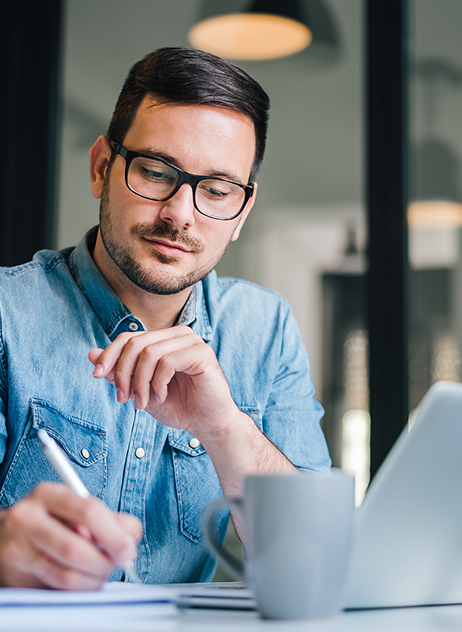The New SEO Battleground: Answers vs. Authority
The digital landscape has fundamentally changed. The goal of SEO is no longer just to get a blue link on the first page; it’s to be the definitive, trusted source for information, whether that source is read by a human or synthesized by an AI model.
If you’ve been paying attention, you’ve seen these acronyms everywhere: AEO and GEO. They sound interchangeable, but treating them that way is a critical mistake that will cost you visibility in the coming years.
AEO (Answer Engine Optimization) and GEO (Generative Engine Optimization) are both modern extensions of your current SEO strategy, but they serve two distinct purposes. One helps you win the quick answers; the other helps you win long-term authority.
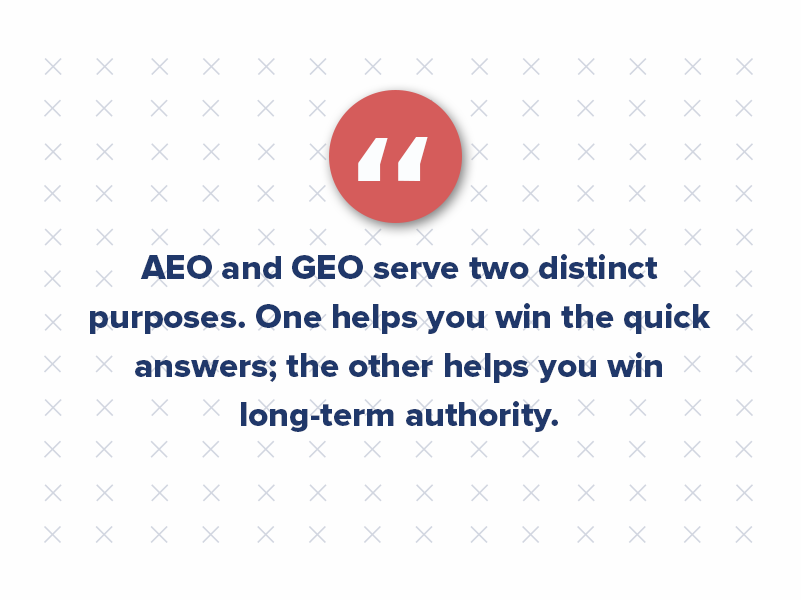
What Is AEO (Answer Engine Optimization)?
AEO is a content strategy designed to help your site appear as a direct, instant answer in search results.
AEO focuses on optimizing content for platforms such as Google’s Search Generative Experience (SGE), voice assistants, and AI-driven tools like ChatGPT.
You see AEO in action every day: Google’s featured snippets, “People Also Ask” (PAA) boxes, and even voice assistant responses. Search engines shifted years ago from simply listing links to directly answering user questions. AEO helps your content align with that shift.

How AEO Works and Why It Matters
AEO focuses on creating content that is clean, relevant, and easy for search engines to parse. It aims to deliver information quickly and concisely to the user.
- Structure Is King: AEO content is structured around specific, searchable questions. You use headers that mirror the way people search (e.g., “What is the average cost of X?”), followed immediately by a short, definitive answer (aiming for 2-4 sentences).
- Targeting High-Intent Queries: AEO excels at targeting short, high-intent keywords such as product comparisons, pricing questions, or step-by-step instructions.
- Technical Signaling: Implementing schema markup, such as FAQ or HowTo, is crucial for AEO, as it signals to search engines that your content is structured for rich results.
The takeaway: AEO helps you meet users exactly when they need a fast answer. It gives your site a shot at winning the zero-click answer space, appearing before competitors even get a click on a traditional blue link.
What Is GEO (Generative Engine Optimization)?
GEO addresses the fundamental change in how AI-powered search engines now generate answers.
With GEO, you position your content as a trusted, citable source that generative AI systems use to build comprehensive summaries. This is critical for visibility on platforms such as Google’s AI Overviews and Bing’s Copilot.
Instead of merely listing links or pulling short quotes (AEO), generative AI models summarize information from multiple, trusted sources, often without sending a click your way. Your goal with GEO is to ensure your content is a trusted source.
What Matters Most for GEO
In an era where generative AI is at our fingertips, is original research still worth the investment? Or are we headed toward a future where SEO is simply about who can produce content the fastest?
GEO is less about formatting and more about Authority, Expertise, and Completeness (E-E-A-T). You’re not just trying to rank; you’re trying to be the source the machine trusts.
This is where the real power of original research comes in; it doesn’t just help SEO; it builds brand authority in SEO and thought leadership.
- Long-Form Authority: GEO favors comprehensive, helpful content that answers complex topics completely. If your content lacks depth, an AI will simply use a competitor’s page.
- Demonstrated Expertise: This is paramount. Content needs clear author bios, credentials, and original insights. Generative AI models trust and cite content that is clearly backed by experience and authority.
- Freshness and Trust: Your content must be up to date and cite reputable sources. If your guide hasn’t been updated in two years, it loses its GEO relevance.
- Clarity: The content must be clearly formatted so machines can parse relationships between concepts, while still reading naturally to a human audience.
The takeaway: As AI-generated search results become standard, GEO helps you stay visible and cited even when there is no traditional snippet or blue link. You become the foundation upon which the AI builds its answer.
GEO vs AEO: The Core Differences
AEO and GEO serve fundamentally different purposes in modern SEO. One is a tactic for instant visibility; the other is a strategy for long-term relevance.
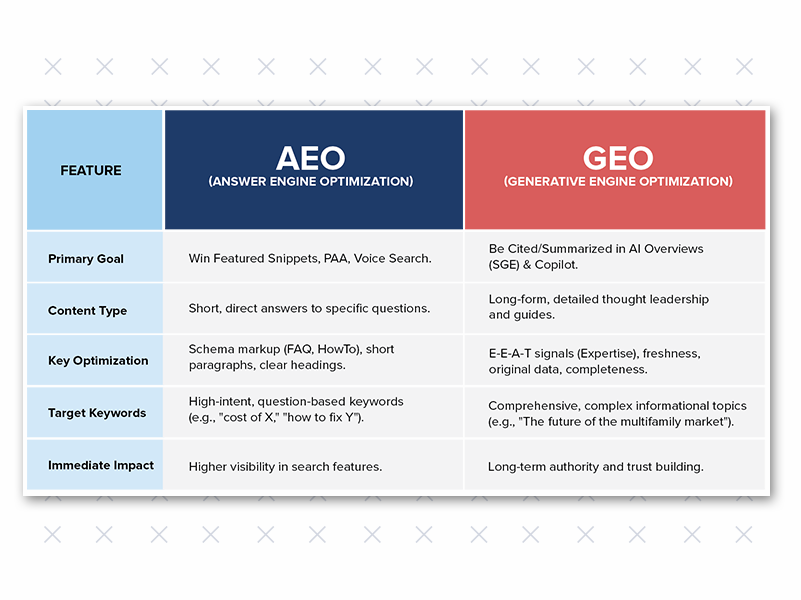
Building a Unified Strategy for 2026
You don’t need to choose one or the other. In fact, a modern SEO strategy requires both. AEO helps you win high-visibility spots for quick answers, while GEO builds lasting trust and relevance.
When to Prioritize Each Approach
Use AEO when:
- You want quick visibility for specific, question-based queries.
- You are creating short-form content like FAQ pages or support articles.
- You are targeting keywords that currently show featured snippets or “People Also Ask” boxes.
Use GEO when:
- You are building brand authority or competing on informational depth.
- You are publishing long-form guides, evergreen content, or complex industry breakdowns.
- The goal is for your organization to be seen as the definitive expert on a topic.
Key Mistakes to Avoid
- Treating them as mutually exclusive: Your content should use both strategically. For example, your comprehensive (GEO) guide can include an FAQ section optimized with schema (AEO).
- Optimizing for machines at the expense of humans: AI models favor content that is written well for real people. If your content reads like it was built for an algorithm, you’ve missed the point.
- Ignoring content freshness (GEO Killer): AI models prioritize current information. If your comprehensive guide hasn’t been updated in two years, it won’t be cited. Schedule regular reviews and content refreshes.
The digital information environment will only become more automated. As search continues to evolve, your content must too. Keep it helpful. Keep it credible. And make sure it’s built to show up, whether a human or an algorithm is doing the reading.
Want help optimizing your content for both AEO and GEO to secure your brand’s visibility in the new search landscape? Get in touch with our team today.

How AI Tools for Marketers Are Changing the Game
AI marketing tools have become an essential part of modern marketing strategies, but how well are we truly utilizing their power?
We’re all aware of the buzz surrounding AI and its role in content creation, but its applications extend far beyond generating high-quality blog posts or automating repetitive tasks.
Today, AI models are rapidly evolving to become indispensable assets for marketing teams, offering transformative capabilities across every facet of digital marketing.

With powerful AI tools at their disposal, marketing teams can now not only optimize their workflows but also push the boundaries of what’s possible in customer support, content generation, and even in creating dynamic visual content. AI-powered tools, such as AI image generators, enable brands to generate images, videos, and social media posts in real-time, providing fresh, eye-catching content that resonates with their target audiences.
But it doesn’t stop there. As AI marketing continues to grow, so does its potential. AI marketing tools are being used to personalize the customer journey at a level never before seen.
AI is providing marketers with insights from real-time data, helping them fine-tune their strategies and maximize their marketing efforts. It’s not just about automating tasks; it’s about revolutionizing how marketers interact with their audiences and respond to their needs.
Here are some of the best AI tools for marketers that you may not have heard of yet.
1. Neuroflash
Neuroflash is a powerful AI writing tool that offers high-quality content generation for blogs, social media posts, and more. It utilizes deep learning algorithms to enable marketers to create SEO-friendly, engaging copy in seconds. Neuroflash can also analyze your content to ensure it matches your brand’s voice and tone.
2. Pictory
Pictory utilizes AI to assist marketers in creating professional-quality video content from existing blog posts or long-form content. It’s perfect for turning written content into engaging, shareable video snippets for social media or email marketing campaigns. Pictory’s ability to automatically generate captions and voiceovers sets it apart from traditional video editing software.
3. Copy.ai
Copy.ai is an AI-powered writing assistant that helps marketers generate high-quality ad copy, blog posts, landing pages, and even social media captions in seconds. What sets Copy.ai apart is its ability to create unique, creative content that aligns with your brand’s identity. It’s a great solution for teams looking to accelerate their content creation without sacrificing quality.
4. Phrasee
Phrasee uses AI to optimize email subject lines, body copy, and marketing messaging for higher engagement. Its natural language generation (NLG) technology ensures that each email is not only compelling but personalized to resonate with your audience. Phrasee’s unique approach focuses on data-driven, linguistically sound copy to maximize email marketing results.
5. AdCreative.ai
AdCreative.ai uses AI to generate high-converting ads for paid campaigns. It automatically creates ad designs based on your brand’s guidelines and target audience. This tool helps marketers create multiple versions of ads quickly, allowing them to test which performs best across social media platforms or Google Ads.
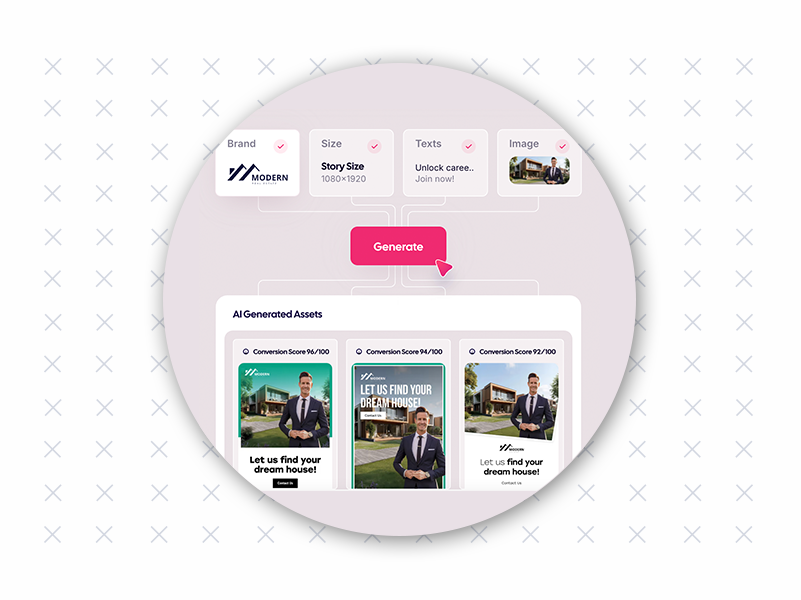
6. Scalenut
Scalenut is an AI-powered content marketing platform that helps marketers with content creation and optimization. It analyzes top-performing articles in your niche, provides content suggestions, and helps you craft SEO-optimized copy. With features like topic clustering and SERP analysis, Scalenut makes it easier to create content that drives organic traffic.
7. Writer.com
Writer.com is an AI-powered writing assistant designed for marketing teams to create high-quality content at scale. Unlike other tools, Writer tailors its content creation to your specific brand voice, ensuring that all generated content aligns with your company’s unique tone and style. This AI-powered tool excels in producing blog posts, web copy, emails, social media posts, and more, all while maintaining consistency across various content formats.
8. Surfer SEO
Surfer SEO uses AI to optimize content for search engines by analyzing hundreds of ranking factors. It provides marketers with a comprehensive SEO audit, keyword analysis, and optimization recommendations for each page on their site. This tool helps content marketers stay ahead of the competition by ensuring their content ranks high in Google search results.
9. Veed.io
Veed.io is an AI-driven video editing tool that helps marketers create professional-quality videos with minimal effort. From auto-generating captions and subtitles to providing easy-to-use video editing features, Veed.io makes video production accessible to teams of all sizes.
10. DeepAI
DeepAI offers an image-generation API that uses AI to create stunning visuals from textual descriptions. Marketers can utilize DeepAI to create distinctive, visually appealing images for websites, social media, and advertising campaigns. It’s an excellent tool for businesses that want to create customized visuals without the need for expensive graphic design services.
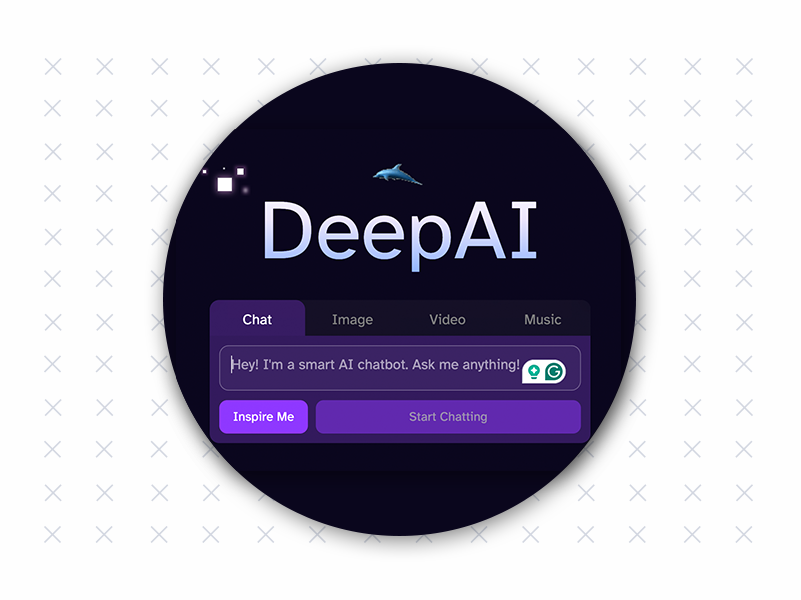
11. Chatfuel
Chatfuel is an AI-powered chatbot platform that helps businesses automate customer service, marketing, and sales on platforms like Facebook Messenger and WhatsApp. With Chatfuel, marketers can build intelligent chatbots to engage with customers, answer frequently asked questions, and capture leads 24/7.
12. Pattern89
Pattern89 uses AI to optimize paid social ads. It analyzes ad performance data to generate recommendations that improve your ad creative and targeting. This tool helps marketers reduce ad spend while increasing engagement and conversion rates.
13. SocialBee
SocialBee uses AI to schedule, create, and automate social media posts for multiple platforms. This tool analyzes your social media audience, helping you schedule posts at the right time and create content that resonates with your followers. It’s a great tool for managing content across platforms like Instagram, Facebook, Twitter, and LinkedIn.
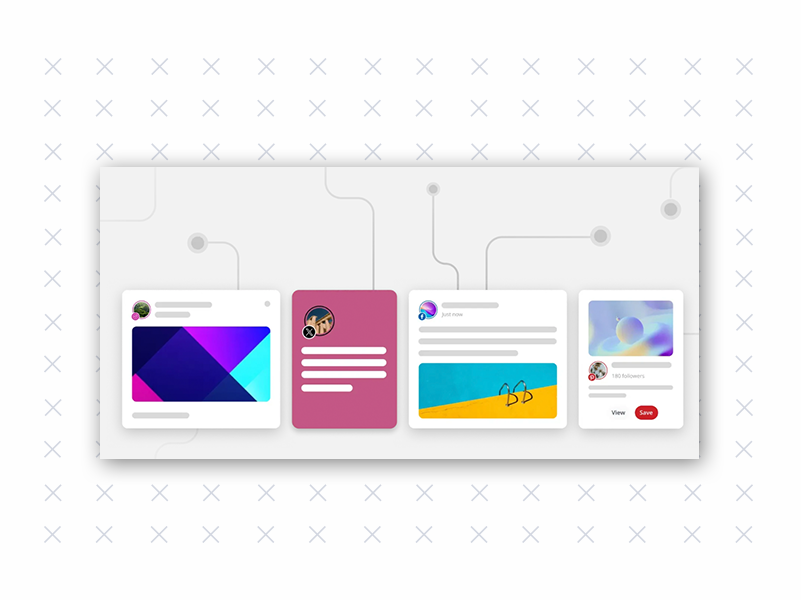
14. QuillBot
QuillBot utilizes AI to assist marketers in enhancing their writing by paraphrasing, summarizing, and editing content. Whether you’re reworking a blog post or improving email copy, QuillBot offers features like grammar checks and vocabulary enhancement to polish your content.
15. Outbrain
Outbrain is an AI-powered content recommendation platform that helps marketers drive traffic to their websites. It works by analyzing user behavior and recommending relevant content, increasing engagement and time spent on site. This platform integrates with content networks, enabling native advertising that promotes your brand in an organic and user-friendly manner.
16. On-Page.ai
On-Page.ai helps marketers optimize their on-page SEO strategy by analyzing your content’s performance, suggesting improvements, and ensuring your content aligns with SEO best practices. It provides insights into keyword usage, content length, and other important SEO factors to enhance your website’s visibility.
17. Frase
Frase combines AI and SEO to help marketers create content that ranks well. It provides keyword research, content analysis, and topic modeling, all tailored to help content creators build SEO-friendly content. By combining research tools with an AI-driven content editor, Frase streamlines the content creation process.
18. Rephrase.ai
Rephrase.ai allows marketers to create personalized videos at scale. This AI tool enables marketers to generate video content featuring custom avatars and text-to-speech capabilities, offering a dynamic way to communicate with leads and customers on a personal level.
19. Lately.ai
Lately.ai uses AI to create and schedule social media posts from long-form content. It analyzes your content and extracts the most relevant phrases and insights, generating short-form posts that can be used across social media channels.
20. MarketMuse
MarketMuse uses AI to analyze and optimize content, providing insights on how to create high-performing content that drives organic traffic. It also offers AI-driven topic research and content recommendations, helping marketers stay ahead of SEO trends and create content that ranks.
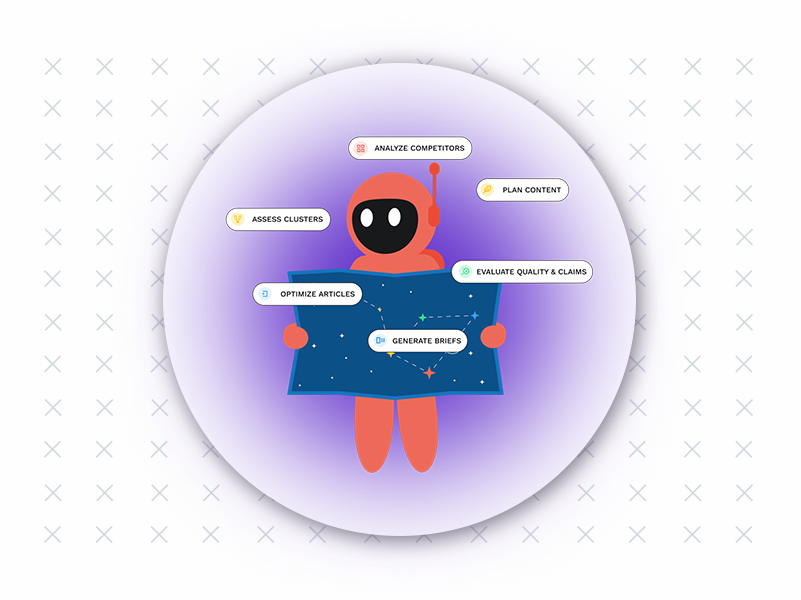
21. Dynamic Yield
Dynamic Yield is a leading personalization platform that uses AI to analyze customer behavior and dynamically modify web page content, product recommendations, and offers in real time. This focus on Experience Optimization (EXO) enables marketers to automatically test and deliver personalized experiences across web, app, email, and advertising channels, maximizing relevance for every user.
22. Drift
Drift is an AI-powered conversational marketing platform specifically focused on qualified lead generation and sales enablement through automation. Unlike general customer service bots, Drift’s intelligence identifies high-value site visitors. It engages them in real-time, personalized conversations to answer complex questions and book meetings instantly, streamlining the funnel.
23. Alteryx
Alteryx is a platform that helps marketers blend, prepare, and analyze large volumes of data without specialized coding expertise. By incorporating AI, Alteryx enables sophisticated predictive modeling and highly effective customer segmentation, transforming disparate datasets into clear, actionable strategies for campaign forecasting and precise targeting.
24. Grammarly Business
Grammarly Business is an AI writing assistant focused on ensuring consistency, clarity, and tone control across entire marketing teams. This tool enforces specific brand style guides and terminology across all content creators, ensuring that every piece of output, from internal emails to external ad copy, remains professional, polished, and perfectly on-brand.
25. DeepL Write
DeepL Write is an advanced AI writing and translation tool known for producing highly natural-sounding, contextually accurate translations and rephrasing suggestions. It offers higher quality, idiomatic translation than many generic tools, making it an invaluable asset for global or multilingual marketing campaigns where linguistic precision and cultural nuance are critical.
26. Runway Gen-2
Runway Gen-2 is a leading text-to-video AI model that allows users to create entirely new, dynamic video clips from simple text prompts. This groundbreaking technology directly addresses the high cost and time required for traditional video production, enabling marketers to generate unique, high-quality conceptual video assets for use across digital campaigns almost instantly.
27. Luminar Neo
Luminar Neo is an AI-driven photo-editing software that uses machine learning to perform complex enhancements, such as detailed sky replacement or sophisticated portrait retouching, often with a single click. This tool enables marketing teams to quickly professionalize real-world photos (such as property images or event shots) without requiring extensive, time-consuming graphic design expertise.
28. Criteo
Criteo is a prominent commerce media platform that leverages AI to run highly effective retargeting and personalized display ad campaigns across a massive network of publishers. Specializing in e-commerce and retail, Criteo uses machine learning to recapture users with dynamic, product-specific ads based on their historical browsing behavior, maximizing purchase completion rates.
29. Acquisio
Acquisio is an AI-powered platform designed for bidding and optimization across various paid search and social channels. Its core function is to maximize ad spend efficiency by automatically adjusting bids and budget allocations across Google, Microsoft, and social platforms based on real-time performance data, ensuring continuous ROI improvement.
30. Chorus by ZoomInfo
Chorus by ZoomInfo is an AI platform that analyzes conversations (sales calls, meetings) between sales teams and customers. Critically, it provides marketing teams with deep, unstructured Voice of Customer (VoC) data, automatically identifying market trends, common competitor mentions, and customer pain points to inform and refine content and campaign strategy.
The Future Is AI
As AI marketing tools continue to evolve, they’re not only transforming how marketing teams create content, engage with customers, and analyze data; they’re also fundamentally reshaping how we think about marketing itself. The power of AI lies not in replacing human creativity but in amplifying it.
But here’s the catch: AI is only as powerful as the strategy behind it. It’s not enough to simply use the tools; the magic happens when you integrate them thoughtfully into your marketing efforts. Every AI-powered tool you adopt should be a part of a larger, cohesive strategy that keeps your audience at the forefront.
As you explore these innovative AI tools, remember that the key to success isn’t just in adopting the latest technologies; it’s in using them to elevate the human touch. AI can give you the edge, but it’s the way you wield that edge that will define your brand’s success.
AI can help marketers create compelling content, automate workflows, and fine-tune customer journeys. However, the brands that will truly stand out are those that use AI not as a crutch, but as a powerful ally in crafting unique, meaningful experiences for their customers.
Ultimately, AI in marketing is a powerful tool for those willing to embrace change, experiment, and think creatively. Are you ready to let AI lead you to new heights in marketing innovation? The future is now, and AI powers it.

ChatGPT’s Impact on Your Google Analytics and How to Track AI-Driven Traffic
The rise of AI-driven tools like OpenAI’s ChatGPT is reshaping how users interact with websites, engage with content, and ultimately convert into customers. While these advancements present new opportunities, they also introduce complexities in tracking user behavior and analyzing traffic data.
For marketers and digital strategists, understanding how AI tools influence conversion rates, referral traffic, and data sources like Google Analytics is crucial. As AI-powered platforms become increasingly integrated into users’ daily search behaviors, particularly across social media platforms, web pages, and email marketing campaigns, the ability to accurately track and attribute this traffic will have a direct impact on long-term marketing success.
With platforms like ChatGPT generating organic user engagement, it’s essential to reassess how we measure and evaluate traffic, whether it comes from paid channels like Google Ads or social media marketing efforts.
As search engine optimization (SEO) practices evolve, marketers must refine their tracking strategies to include these new digital interactions. Ignoring AI-driven shifts could lead to underestimating traffic from ChatGPT and similar tools, skewing your analytics platform, and making it harder to identify trends in audience behavior.

What Is Referrer Data and Why Does It Matter?
To understand the impact of ChatGPT on your analytics tracking, let’s first define what referrer data is and why it’s so crucial for understanding your web traffic.
When a user clicks a link on one site (say, ChatGPT) and lands on another (your website), the destination site typically receives referrer data through the HTTP referrer header. This information tells your analytics tools where the user came from, such as “Google,” “Facebook,” or a specific blog post on another site. This data allows marketers to track the effectiveness of specific channels, campaigns, and content.
However, things get a bit tricky when ChatGPT is involved. Let’s dive deeper into how ChatGPT is revolutionizing the way we collect and analyze referrer data.
The ChatGPT Dilemma: Free Users vs. Paid Users
One of the key issues with ChatGPT’s referrer data is the distinction between free-tier and paying users. OpenAI’s implementation of referrer data works differently for these two groups:
- For ChatGPT Plus (paid) users, OpenAI includes referrer data when they click links. So, if a paying user shares a link to your website in a conversation, the traffic will show up with a referrer such as chat.openai.com in your Google Analytics, allowing you to attribute that traffic properly.
- For free-tier users, however, OpenAI does not send referrer data. When a free user clicks on a link (for example, a link to your website), the traffic will be logged as “Direct” in your Google Analytics or other analytics tools. This is because no referrer information is passed along with the request, leaving the traffic source unidentified.
The Impact on Google Analytics and Your Marketing Strategy
Here’s where it gets interesting, and potentially misleading. Since free-tier users are generating traffic without referrer data, their visits appear as direct traffic in Google Analytics. This could result in spikes in your traffic that are difficult to attribute accurately.
Imagine you’ve noticed an uptick in traffic to your site, but your analytics are labeling this traffic as direct. In most cases, direct traffic originates from users who have typed in your URL directly, clicked on a bookmark, or come from other untracked sources.
However, if that traffic coincides with a mention of your brand in ChatGPT or a link shared through the platform, it could very well be traffic from free-tier users, without any obvious connection to ChatGPT.
So, why does this matter? Well, marketers often use referrer data to understand which channels are driving the most traffic. If you’re not accounting for the possibility of traffic from ChatGPT’s free-tier users, you could be underestimating ChatGPT’s role as a traffic driver. In short, your analytics might be missing a significant chunk of data, which means you’re not fully understanding the impact of your digital marketing efforts.
How to Account for ChatGPT Traffic in Your Analytics
As a marketer or analyst, it’s essential to think creatively and adjust your tracking methods to accommodate this new traffic behavior. Here are some strategies you can implement:
1. Check Patterns With Traffic Spikes
If you see a sudden increase in direct traffic and can’t pinpoint its source, consider looking at any recent mentions of your brand in ChatGPT or other AI-driven platforms. Cross-reference the timing of traffic spikes with ChatGPT conversations where your property or brand was mentioned. This can help you infer that some of the direct traffic might actually be coming from ChatGPT.
2. Use UTM Parameters for Better Tracking
One of the most effective ways to improve attribution in this scenario is by using UTM parameters in links that you share in ChatGPT or other similar platforms. By tagging your URLs with custom tracking parameters (such as utm_source=chatgpt), you can gain a better understanding of which AI-driven tools are driving traffic to your site. This will enable you to capture the source of traffic, even when referrer data is unavailable.
For example, if you’re sharing a link to your multifamily property website in a ChatGPT conversation, you might use a URL like this:
By doing this, you’ll be able to see in Google Analytics that the traffic came from a ChatGPT interaction.
3. Monitor Referral Traffic in General
While UTM parameters will be your best friend in tracking AI-driven traffic, it’s still essential to monitor the overall referral traffic in Google Analytics. If you see significant shifts in direct traffic over time, you can analyze the possibility that ChatGPT’s free users are contributing to those visits.
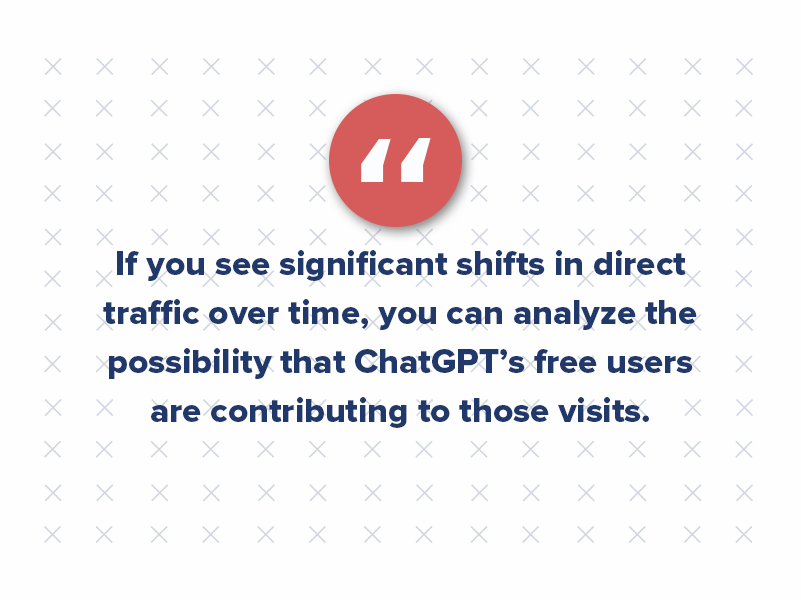
4. Educate Your Team
Make sure that everyone on your marketing and analytics teams understands the nuances of ChatGPT traffic. Being aware of the potential lack of referrer data will allow your team to interpret the data better and make more informed decisions.
The Future of Attribution and ChatGPT
As AI tools like ChatGPT reshape how users discover and engage with content, marketers face a new frontier in tracking and understanding traffic behavior. The real challenge isn’t just adjusting to these changes, it’s anticipating them. AI-driven platforms, particularly those with conversational interfaces, have rapidly become pivotal in shaping the digital experience. Their growth is inevitable, and with it, the complexities of attributing traffic are only going to deepen.
While UTM parameters and cross-referencing traffic patterns offer practical ways to track traffic, they’re not enough to keep up with the evolving role of AI in search and content discovery. The real value lies in rethinking how we interpret attribution in a world where direct traffic can mask valuable insights.
Marketers must be prepared to rethink not just how they measure, but how they understand consumer journeys as they increasingly occur across AI-driven interactions, often outside traditional search engines. Being proactive here means not just keeping pace with changes, but staying one step ahead as AI transforms the digital landscape.
Don’t Miss the Hidden ChatGPT Traffic
When you see a spike in direct traffic after a mention of your brand in ChatGPT, it’s easy to dismiss it as an anomaly. But this surge could be an underreported goldmine of potential insights. Free-tier users might not be sending referrer data, but their visits are still highly relevant. Without the right tools in place, you’re missing a crucial piece of the puzzle.
The key here is to stop seeing analytics as a static reflection of actions and start using it as a dynamic tool to trace and understand user behavior. ChatGPT is transforming how users discover, engage with, and respond to content, and marketers must adjust their focus to these nuanced patterns to more effectively interpret traffic sources.
In this age of AI-assisted discovery, being able to connect the dots between mentions, behaviors, and conversions can illuminate trends that were previously invisible. Ensure you’re not leaving valuable data on the table by overlooking the subtle, AI-driven connections that are becoming a core part of how prospects discover your brand.

How AI Is Changing SEO in Multifamily Marketing
The rules of search marketing are changing under our feet. Imagine a prospective renter asking ChatGPT (not Google) to recommend the best apartment community in your city. Will your property even appear in that AI-generated answer?

In an era of generative AI and fragmented search behavior, multifamily marketing executives face tough questions. Can you trust algorithms with your brand’s story? Who holds authority when AI can generate content on the fly? And with renters finding apartments via TikTok, Instagram, or voice assistants, how do you measure marketing impact when traditional Google Analytics might not capture the whole picture?
These aren’t hypothetical questions; they’re strategic dilemmas CEOs, COOs, and Marketing Directors in the multifamily industry must contend with right now.
Welcome to the new SEO reality, where Google is still critical but no longer the only game in town.
The Rise of Search-Everywhere Optimization
Not long ago, “SEO” was practically synonymous with “Google SEO.” Today, that’s no longer the case. Renters (especially younger ones) increasingly turn to alternative discovery platforms, forcing multifamily marketers to optimize for search everywhere, not just Google.
In fact, Google’s own research found that nearly 40% of Gen Z prefers using TikTok or Instagram for search instead of Google. Instagram has now risen to the second-largest search platform globally, reflecting a dramatic diversification in search behavior. From social media hashtags to YouTube tutorials to Reddit threads, people are finding information (including apartments and local recommendations) in many places that never show up in Google Analytics.
To put things in perspective, Google still leads in traditional search engine usage, but even that dominance is starting to waver. In 2023, Google’s search engine market share dipped below 90% for the first time in a decade.
And if you broaden the definition of “search” to include all platforms, some analyses peg Google at only about 18.8% of global search activity. The rest is happening on platforms like TikTok, Instagram, YouTube, Amazon, Snapchat, voice assistants, and now AI chatbots.
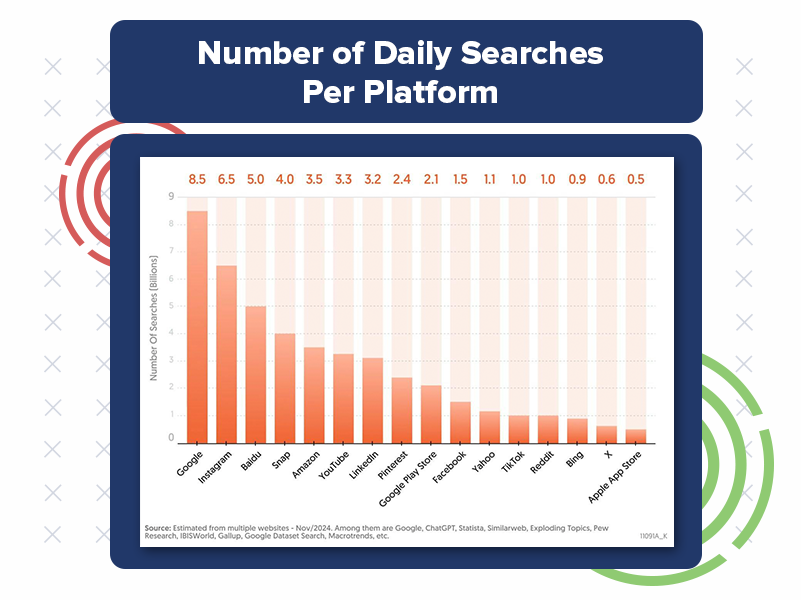
In other words, SEO strategies can’t rely solely on Google anymore. This is the advent of “search-everywhere optimization,” where the goal is to make your content visible wherever your audience might be searching.
For multifamily marketers, this shift is huge. Prospective renters might discover your property through an Instagram neighborhood tour, a TikTok video of your amenities, a question answered on Reddit, or a query to Alexa or Siri. They might even ask ChatGPT or another AI assistant for “the best pet-friendly apartments in {City}” and get an AI overview of options.
If your marketing strategy is focused only on ranking in Google’s search results, you risk missing swaths of these prospects. The “new SEO” means embracing a fragmented ecosystem and crafting content that’s optimized for multiple search engines and social platforms.
Practically, this could involve:
- Social SEO: Optimizing your social media profiles and posts with keywords (yes, people search within social apps). For example, ensuring your Instagram captions include local neighborhood terms or amenities can help you appear in Instagram search results. TikTok SEO is also a real thing; savvy brands are including spoken keywords in their TikTok videos and text overlays so that TikTok’s algorithm surfaces them.
- Visual Search: Recognizing that renters often search visually. Instagram and TikTok are essentially visual search engines. A strong visual content strategy (high-quality photos, short videos, virtual tours) optimized with the right tags and descriptions can capture those searchers.
- Alternative Platforms: Don’t forget platforms like YouTube (for longer video content), Pinterest (for apartment decor inspiration searches), and even voice search on smart speakers. The rise of voice search is notable — 58% of consumers have used voice search to find local business information, like nearby apartments. If someone asks a voice assistant about your property, will it have the information (and reviews) needed to recommend you?
The bottom line: your multifamily marketing plan must treat SEO as broader “search everywhere” optimization. It’s about meeting potential renters on their terms, whether that’s a Google query, a social media search, or an AI chatbot conversation. The future of SEO lies in embracing this multi-platform reality and ensuring your brand is present and persuasive across all of it.
Hype vs. Reality: AI-Driven Search Traffic in 2025
Of course, no conversation about the future of search is complete without talking about generative AI tools like ChatGPT. Over the past two years, we’ve heard countless predictions that AI chatbots will revolutionize search and siphon traffic away from traditional search engines. Some multifamily marketers might be wondering if “ChatGPT SEO” is now a thing, and whether they should be optimizing content for AI referrals. The truth requires cutting through some hype.
There’s no doubt that ChatGPT’s usage has skyrocketed. OpenAI’s ChatGPT reached over 400 million weekly users by early 2025, an astonishing adoption rate. And indeed, websites have started seeing traffic coming from ChatGPT’s citations. In fact, referrals to publisher websites from ChatGPT have grown eightfold in the span of six months.
But before we declare the death of Google, let’s look at the actual impact: even after an 8x surge, AI-driven search traffic still accounts for less than 0.1% of total visits for those sites.

In other words, 99.9% of traffic is still coming from traditional channels. ChatGPT might be sending a trickle of extra visitors, but it’s nowhere near replacing Google, direct traffic, or even social media referrals in volume.
ChatGPT’s popularity doesn’t (yet) equal massive web traffic. Despite the buzz, ChatGPT referral traffic is still a tiny slice of the pie for most websites.
For example, fourteen leading news publishers received a combined 3.5 million visits from ChatGPT in one month — sounds great, until you realize those sites had 3.8 billion total visits that month. That’s why AI-driven search made up under 0.1% of traffic. This gap between hype and reality is critical as you plan your 2025 SEO strategy.
Yes, you should watch ChatGPT and similar AI platforms, but don’t bet the farm on them just yet. Why is AI referral traffic so small despite the huge usage of tools like ChatGPT? The fundamental issue is user behavior. Generative AI tools often answer questions directly on their own platform, without sending the user to an external site.
If a renter asks ChatGPT, “What are some good apartments in Downtown Seattle?”, ChatGPT might generate an answer drawing from various sources (and cite those sources). The user gets a convenient summary right there in the chat interface. They might not feel the need to click through to every source cited.

In essence, AI-driven search encourages “zero-click” results even more than Google does — the answer is delivered in full, which is great for user convenience but not so great for your website’s traffic. Publishers and brands are essentially training AI models with their content, and not always getting the click credit back.
So what does this mean for you as a multifamily marketer? Calibrate your expectations. Don’t ignore AI search (it’s growing fast, and those numbers could change), but don’t panic either. Google is still the primary source of SEO traffic for now, with social and direct channels also crucial. Consider AI chatbots as additional discovery tools — if ChatGPT or Bing Chat can cite your content, it’s another way to build brand awareness.
For instance, an AI answer might mention your property or quote your blog post about renting tips, planting a seed in the user’s mind. But that click may never show up in your analytics, so success might look different (brand mentions, not just site sessions).
A savvy SEO strategy keeps one foot grounded in reality and one foot testing the waters of emerging tech. Continue to invest in traditional SEO and content marketing strategies that drive organic traffic (more on that below), while also experimenting with optimizing content for AI. This could mean ensuring your content is well-structured and factual so AI models find it credible and worth citing. It might also mean using schema markup or FAQs on your site that could be pulled into AI answers.
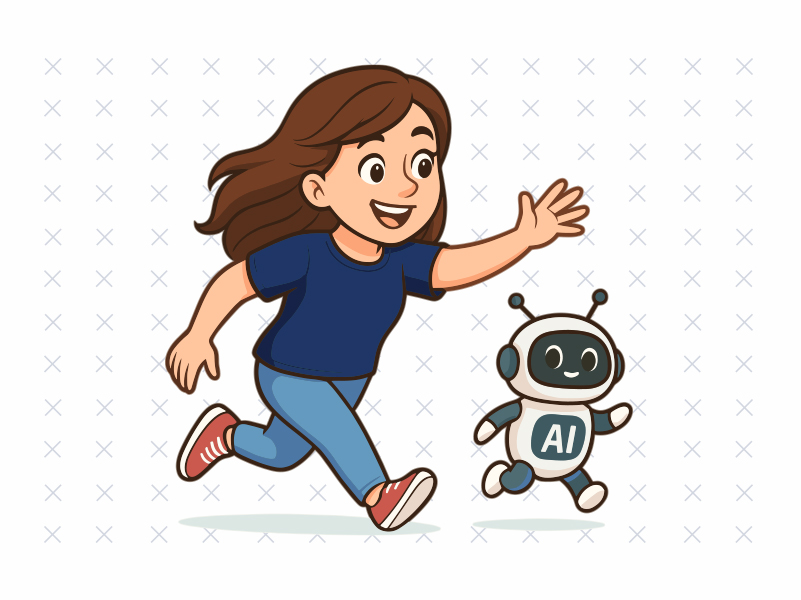
Just remember: AI-driven search is a supplement, not a substitute — at least for now. The worst thing a marketing leader could do is chase the shiny object (AI) at the expense of the proven channels that still deliver 99% of your leads.
Smarter or Just Louder? Generative AI’s Impact on Content Quality
One of the promises of generative AI is that it can make content creation lightning-fast. Thanks to tools like ChatGPT, marketers can now produce blog posts, social captions, and even video scripts in a fraction of the time it used to take.
But this raises a pivotal question: Is generative AI making content smarter, or just making the internet louder? Quantity has skyrocketed — quality, not so much. As an executive overseeing multifamily marketing, it’s critical to discern whether AI is actually improving your content strategy or just adding to the noise.
Let’s face it: AI-generated content has exploded in recent years. It’s never been easier to spin up 1,000-word articles on any topic under the sun. Need 50 variations of a property description for SEO? An AI can give you that in seconds.
But there’s a catch: AI can only regurgitate what’s already out there. As one industry expert aptly asked, is AI content just repackaging existing information?
In many cases, yes. Generative models predict plausible text based on their training data — they don’t generate new knowledge. If everyone in your market is using the same AI tools trained on the same data, you’ll all end up publishing eerily similar, surface-level content.
The result? A deluge of blogs and pages that add volume but not unique value. Content gets louder, but not smarter. On the other hand, original research and insights are the antidote to AI noise.
When your brand produces content based on unique data — say, a proprietary survey of renters, an analysis of your leasing trends, or a case study from your portfolio — you’re creating something AI can’t replicate (at least until it trains on your content!).
Original, data-driven content marketing gives you fresh statistics, novel perspectives, and specific expertise that stand out in search results. It establishes you as a thought leader with true authority, rather than just another content mill.
While generative AI in marketing can boost efficiency, original research remains the key to true authority. In other words, to build brand authority in SEO, you still need human intelligence and creativity behind your content.

Consider this scenario: A regional property management firm decides to publish a “2025 Renter Preferences Report,” drawing on their internal resident surveys and local market data. They uncover, for example, that 68% of their prospects prioritize commute time over rent price (a hypothetical finding). They publish this report and an accompanying blog post with the data. This kind of original research in SEO is gold — dozens of other sites might quote it, bloggers will link to it, and it gives Google something truly new to chew on.
Meanwhile, a competitor down the road churns out ten AI-written articles like “Top 10 Apartment Amenities” that say nothing readers haven’t already seen. Which content will earn more backlinks, social shares, and trust? The one with original, data-driven insight. As one marketing leader put it, “AI can summarize existing data, but it can’t generate new insights.”
Brands that invest in creating those new insights will dominate search in the long run. This isn’t to entirely dismiss AI’s role. Generative AI is a fantastic tool for productivity — it can help draft outlines, rewrite sections for tone, or generate ideas. It’s being integrated into content marketing strategies everywhere. Use it for the grunt work, by all means. But don’t outsource your expertise.
The best approach is a hybrid one: leverage AI for efficiency, but infuse your content with the human touch, industry experience, and original data that only you can provide.
Think of AI as your copywriting assistant, not your strategist. The brands that win will be those who pair AI’s speed with human strategy and original research. That’s how you create content that’s not just more content, but better content. And one more word to the wise on this topic: transparency. Audiences are becoming savvy about AI-generated content, and some are wary of it.
A recent survey found 94% of consumers believe AI content should be disclosed, and 46% are less likely to trust a brand that doesn’t disclose AI-generated content. This means authenticity is part of content quality, too. If you do use AI in creating content, consider being upfront about it or at least ensure it passes a high bar of quality and fact-checking.
In the end, content that is honest, insightful, and truly useful will rise above the noise, no matter how it’s produced.
The Human Touch: Why User-Generated Content Still Matters
Amid all this talk of AI, it’s easy to forget a simple truth: people trust people. In the multifamily business, leasing is a very human decision — someone is choosing their next home. All the slick AI content in the world can’t replicate the authenticity of a real resident’s opinion or a genuine human voice. That’s why user-generated content (UGC) has become more vital than ever for SEO and marketing performance.
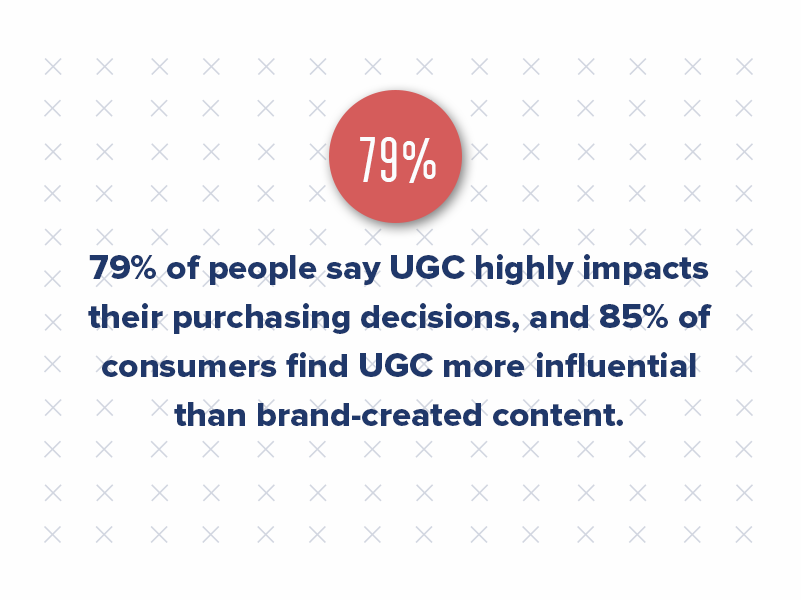
In fact, in a landscape increasingly flooded with AI-produced text and stock marketing copy, the human touch might be your biggest differentiator. Consider these telling statistics: 79% of people say UGC highly impacts their purchasing decisions, and 85% find UGC more influential than brand-created content.
In other words, if someone is on the fence about your apartment community, they’re far more likely to be swayed by a resident’s Instagram post or a review on Apartments.com than by your polished brochure copy. This makes sense — UGC is seen as more authentic because it is more authentic. It’s the digital word-of-mouth. Renters trust the lived experiences of other renters over a corporate website every time.
And notably, this isn’t just a consumer gut feeling; it translates into SEO performance as well. Google’s algorithm itself now prioritizes content like customer reviews, Q&A forum discussions, and social proof in search results.
When someone searches for “Best apartments in Uptown” or “{Your Property} reviews,” Google often showcases UGC (i.e., the star ratings, the review snippets, the questions people ask on Google Maps) right at the top of results.
Authentic voices carry weight. It’s no wonder Google has evolved to surface user-generated content prominently. Reviews and community-driven discussions signal trust and relevance.
And as of 2025, social media algorithms are also favoring UGC more than ever. Instagram and TikTok have tweaked their platforms to push authentic, community posts to the forefront of feeds.
A resident’s raw, unscripted TikTok tour of an apartment can go viral overnight, whereas a slick professional video might get ignored. The takeaway: UGC isn’t just “nice to have” — it’s a cornerstone of modern SEO and brand trust. So, how can multifamily marketers harness the power of UGC?
First, encourage your residents to create content. This could be as simple as running an Instagram hashtag contest for the best balcony garden photos in your community, or asking for testimonials to feature on your website. Every genuine review, rating, and social mention contributes to your “digital footprint” in search. Prospective renters often Google “[Your Property] reviews” — make sure there’s something positive for them to find. Even negative reviews, when responded to sincerely, can boost trust (and yes, engagement on those review pages helps SEO too).
Second, integrate UGC into your own content. Showcase real resident stories on your blog. Include quotes from testimonials in your email marketing. Curate social media posts by residents and share them (with permission). Far from ceding control of your message, this approach builds credibility. As marketing experts point out, brands that harness UGC see higher engagement and better conversions because consumers crave authenticity.
Google knows this — engagement and time-on-page are ranking signals. A heartfelt video testimonial might keep a prospect on your site longer (helping SEO) than a generic AI-written paragraph.
Finally, note that UGC can fill content gaps that your team might not even think of. Residents will discuss things in reviews and forums that aren’t on your radar — maybe praising the dog park during winter, or noting that the on-site gym gets crowded at 6 pm. These bits of information often contain keywords and long-tail phrases future renters search for (“dog-friendly apartments with winter facilities” or “apartment gym peak hours”).
By facilitating and listening to UGC, you indirectly boost your SEO for those niche queries, too. In a time when AI content is everywhere, UGC stands out as real, unscripted, and trustworthy. It’s content that AI can’t fake.
Make it a part of your strategy: encourage it, amplify it, respond to it. Not only will you earn renters’ trust, but you’ll also please the search engines by providing the kind of content they know users want to see.

Featured Snippets Are Fading: Enter Answer Engine Optimization (AEO)
If you’ve been keeping an eye on your Google traffic over the past year, you might have noticed something curious: those once-coveted featured snippets (the answer boxes at the top of search results) are showing up less often for your keywords. And when they do appear, they might be grabbing the answer and yielding fewer clicks to your site.
What’s happening?
In a word: evolution.
Google is transitioning from a “search engine” into more of an “answer engine,” especially with the rollout of its AI-driven features. For multifamily marketers, this means it’s time to pivot from traditional snippet-focused SEO to Answer Engine Optimization (AEO).
First, let’s talk about the decline of the featured snippet. Several recent studies have shown a significant drop in the prevalence of featured snippets on Google since late 2024. In one analysis, the number of queries that yielded a featured snippet fell by 35% between September 2024 and March 2025.
In some niches, the decline was even more dramatic — another dataset showed a 57% drop in snippet occurrence over that period for a set of tracked queries.
The culprit? Google’s new AI-generated answers (often called “AI overviews” in Search Labs) are starting to replace the traditional snippet in many cases.
Instead of a single website excerpt getting the spotlight, Google’s AI might generate a multi-source summary for the user’s query. Even when featured snippets do appear, their ability to drive clicks has diminished. Why? Because if the answer is right on the page, users have less reason to click through.
Recent research by Ahrefs compared search results with and without Google’s new AI overview present. The findings were sobering: when an AI overview was shown, the click-through rate (CTR) of the top organic result plummeted from about 7.3% to 2.6%.
That’s a massive drop in traffic for the site that technically “ranks #1.” In percentage terms, one study noted a 34.5% reduction in organic CTR for top pages when Google’s AI overview was in play.
Essentially, the AI answer is siphoning off clicks that would have gone to the organic results — a trend similar to how old featured snippets sometimes led to “zero-click searches,” but now on steroids. Google’s own CEO has claimed that AI overviews could improve engagement, but early data contradicts that.
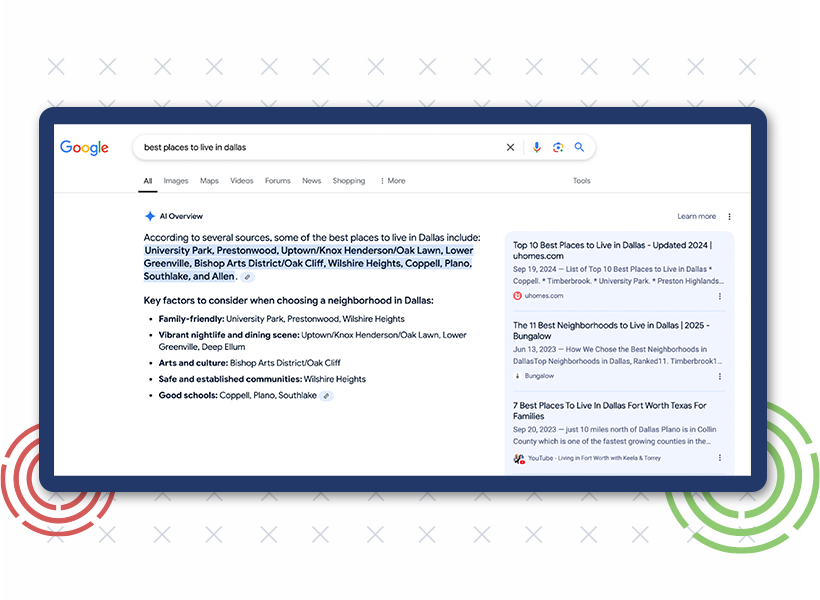
For marketers, this means that even if you maintain your rankings, you might see less traffic coming from those rankings if Google decides to answer the query on the SERP itself.
So, are featured snippets dying? It appears they’re certainly losing prominence. But the need to be the source of answers is not dying — it’s just shifting. This is where Answer Engine Optimization (AEO) comes in. AEO is the practice of optimizing your content specifically to serve as direct answers in these new paradigms.
Rather than just aiming for Rank #1 in a list of blue links, you’re aiming to be the answer that the search engine (or voice assistant, or chatbot) delivers to the user. It’s an evolution of traditional SEO, recognizing that more searches are happening in an answer-oriented context (think Google’s AI summaries, Siri’s spoken answers, Alexa’s responses, etc.).
What does AEO involve? In many ways, it builds on good SEO practices but with extra structure and clarity. Key tactics include:
- Provide Concise, Structured Answers: For common renter questions (e.g. “What amenities do luxury apartments have?” or “How much is the average rent in Uptown?”), make sure your content provides a clear, succinct answer. Use headings, bullet points, and schema markup (like FAQ schema) to signal the structure. AEO is about giving the algorithms exactly what they need to extract a direct answer. If you have a blog post titled “10 Questions to Ask When Renting an Apartment,” you might format it so each question is a header followed by a brief answer. This increases your chances of being pulled into a featured snippet or voice answer box.
- Optimize for Voice Search Phrases: Voice queries tend to be conversational and often phrased as questions or commands (“find me an apartment near the park with 2 bedrooms”). 58% of consumers use voice search for local business info, so it’s crucial to mirror that language in your content. This might mean incorporating Q&A-style content on your site. Think about the exact phrases a renter might speak into Siri or Alexa, and make sure those phrases (or close variations) appear in your copy. AEO and voice search optimization go hand-in-hand.
- Maintain Fast, Mobile-friendly, and Context-rich content: This hasn’t changed – the technical side of SEO (speed, mobile UX, meta tags) still matters for AEO. But additionally, context matters. For instance, if someone asks, “Which apartments in my area have dog parks?”, an AI-powered engine might favor content that directly addresses pet-friendly apartments in that specific area. Ensure you have hyper-local content and that your Google Business Profile, NAP (Name, Address, Phone) data, and local schema are all up to date. That way, if an answer engine is picking “best apartments near [neighborhood]”, your data helps put you in the mix.
- Focus on Intent and Accuracy: AEO is unforgiving to fluff. If your content doesn’t directly answer the user’s intent, it likely won’t be used by an answer engine. During content planning, identify the core intent behind keywords. For example, someone searching “apartment lease guarantor” likely wants to know what a guarantor is and how it works. AEO-oriented content on that topic should jump straight into an explanation, not beat around the bush. And accuracy is paramount – if answer engines find a more authoritative or precise answer elsewhere (or worse, if your content is wrong), you’re out. This is where having original research and clear sources can help (a nice overlap with the previous section). If you can cite a statistic or provide a fact no one else has, you become the authority the answer engine trusts.
It’s worth noting that AEO doesn’t replace traditional SEO; it augments it. You still want to rank well in the regular results, because not every search has an answer box, and many users still scroll. But AEO recognizes that the top-of-page real estate is evolving.

We’re headed toward a search results page that might have an AI summary at the top (with citations), followed by maybe one featured snippet or knowledge panel, and then the list of links. And in voice search, there is often only one answer given. It’s a winner-takes-all scenario. That’s why securing that answer spot can deliver outsized rewards.
Forward-thinking multifamily marketers should start treating AEO as an essential part of their SEO strategy. Answer Engine Optimization means thinking beyond “How do I rank #1 for [keyword]?” to “How do I become the trusted answer for questions my audience is asking?” It’s a shift in mindset from pure keywords to user questions and intents.
![Forward-thinking multifamily marketers should start treating AEO as an essential part of their SEO strategy. Answer Engine Optimization means thinking beyond “How do I rank #1 for [keyword]?” to “How do I become the trusted answer for questions my audience is asking?” It’s a shift in mindset from pure keywords to user questions and intents.](https://criterionb.com/wp-content/uploads/2025/06/Generative-AI-and-SEO-Call-Out-4.jpg)
In practice, this might mean creating more FAQ pages, writing more how-to guides and Q&A style blogs, and using tools like Google’s “People Also Ask” and Bing’s chat queries to research what questions are being asked. If featured snippets are indeed on the decline, then capturing that Answer Engine position (whether on Google SGE, a voice assistant, or an AI chat) is the next big prize.
Google’s SGE: What It Is and How to Adapt
By now, you’ve likely heard of Google’s Search Generative Experience (SGE) — Google’s bold experiment to infuse generative AI into the search results page. For multifamily marketers, SGE is one of the most important developments to watch, as it could fundamentally change how your prospective renters interact with search. Let’s break down what SGE is, how it’s reshaping search, and what you should do to stay ahead.
What is SGE? In simple terms, SGE is Google’s effort to provide AI-generated answers within Google Search itself. Instead of just showing the usual list of blue links, Google can now generate a rich answer at the top of the results for certain queries. This AI-powered summary might include text, bullet points, images, and citations with links to the sources. The idea is to give users a deeper, more intuitive result, especially for complex queries.
For example, a user could type a broad question like “What are the best neighborhoods for young professionals in Dallas with affordable rent?” and SGE would produce a concise overview: perhaps mentioning three neighborhoods, highlighting a couple key stats or insights for each (drawn from various websites), and then suggesting some next follow-up questions. It’s search meets AI meets a bit of a chat-like experience. Google says SGE aims to help people ask more nuanced questions, grasp topics faster with AI summaries, and even accomplish tasks directly from the search interface.
You might have seen examples where SGE can do things like draft an email or generate an image if prompted, though for most search marketing purposes, it’s the Q&A summary that matters. At its core, SGE represents Google’s response to the chatbots (ChatGPT, Bing Chat) that were threatening to upend traditional search. Google is basically saying: “We can do that too, right on our search page.”
Now, how does SGE reshape the search results page (SERP)? From what we’ve observed in beta tests and rolling updates, when SGE is activated for a query, it typically occupies the top of the SERP with a colorful background, spanning the width of the page. The traditional ads and search results get pushed further down. The SGE answer often provides a few key points and then perhaps 3-5 links as citations or “next steps” for the user to click if they want more detail.
In effect, it can function like a super-featured snippet. For multifamily, imagine a query like “Luxury apartments vs budget apartments differences” — SGE might display a short comparison table or list, citing an article that you (hopefully) wrote. The critical impact here is on visibility and clicks. If your content is one of the cited sources in an SGE answer, your brand gets visible at the top in the context of that answer, which is great for exposure.
However, the user might get a lot of info from the AI summary itself, meaning they might not click your link even if you’re cited. SGE, therefore, shifts some visibility from traditional organic results to AI-generated summaries.
If your content isn’t part of those summaries, you risk losing out on traffic and awareness. As one SEO expert put it, this change “changes the game for multifamily marketers” — if your site isn’t optimized to appear in SGE responses, you could be invisible to a segment of searchers. Traditional SEO principles still apply, but they must be expanded to account for how AI curates content.

So, what should multifamily marketers do to adapt to SGE? Here are a few strategies:
- Keep Creating High-Quality, In-Depth Content: This point cannot be overstated. SGE tends to pull from top-ranking, authoritative content to build its answers. Google isn’t inventing information; it’s synthesizing from the best of what it finds. That means your content still needs to earn its way to the top. Comprehensive guides, helpful blog posts, and resource pages that thoroughly answer renters’ questions stand a better chance of being included in SGE summaries. For instance, a well-researched blog on “10 Tips for First-Time Renters” that gains traction could be what SGE pulls from when someone asks a related question. Continue to prioritize original research and expertise as discussed earlier — those qualities make your content more likely to be seen as authoritative. In short, content depth and value matter even more now.
- Optimize for Conversational Queries: With SGE (and AI chat in general), we expect more users to type queries in a natural, question form. They might treat Google a bit like ChatGPT, using complete sentences or very specific questions. Adjust your SEO keyword research to include these long-tail, conversational queries. Consider adding an FAQ section to relevant pages addressing those questions (e.g., “What’s it like living in [Neighborhood]?” or “How do I budget for my first apartment?”). Being optimized for these nuanced questions increases your chances of getting picked up by SGE’s algorithms.
- Ensure You’re Technically AI-Friendly: This is new territory, but early indications are that proper schema markup (like FAQ schema, HowTo schema, etc.), clear headings, and well-structured content can help AI better understand and extract your content. Also, continue following E-E-A-T guidelines (Experience, Expertise, Authoritativeness, Trustworthiness) — Google’s AI is likely tuned to favor content from sources that demonstrate these qualities. For multifamily firms, this means showcasing your expertise (e.g., through author bios, case studies, and citing trustworthy data). If SGE is picking which site’s info to trust in an answer, you want to signal “we know our stuff and can be trusted.”
- Leverage Local SEO for SGE: Multifamily marketing is inherently local. SGE has shown improvements in handling local search queries — for example, “apartments near Central Park under $3k.” Make sure your local SEO is airtight: update your Google Business Profile with complete info and fresh photos, gather Google reviews (which both help traditional SEO and might influence AI results for local intent), and include localized content on your site. If there are common local questions (e.g., “Is [Neighborhood] safe for families?”), consider addressing those on your blog. SGE will likely use data from Google Maps, reviews, and local content when answering location-based questions, so be present in those data sources.
- Monitor and Measure: Start looking at your analytics and Google Search Console data for signs of SGE’s impact. Google is beginning to report when content is shown in AI overviews. You might see impressions for queries where you were cited by SGE without a click. Keep an eye on overall organic traffic and click-through rates on your top queries. If you notice drops that coincide with SGE’s rollout, that might prompt you to double down on AEO tactics or content updates. Conversely, if you see spikes in impressions but not clicks, that could indicate your content is being surfaced in SGE answers. It’s a new kind of metric to wrap your head around: being “visible” even without a click. We might need to start valuing that exposure in a similar way to how we view, say, a billboard impression — it has branding value even if it doesn’t drive an immediate click.
It’s important to remember that SGE is still an experiment. Google is testing and refining it, and it’s not yet available to all users as of this writing. There’s been both excitement and pushback; some users love the new AI answers, others find them confusing or worry about inaccuracies. Google will undoubtedly tweak the feature over time. Maybe SGE becomes the new norm; maybe it gets dialed back.
Regardless, the trend is clear: search results are becoming richer and more AI-driven. As a multifamily marketing leader, staying informed and agile is your best play. In summary, treat SGE as both a challenge and an opportunity.
- The challenge: your content now has to compete in an AI-curated space and not just the old 10 blue links.
- The opportunity: if you can land your content as part of an SGE answer, you gain prime visibility and the halo effect of being “what Google itself summarized.” Adapt your SEO strategy with SGE in mind, and you’ll be positioning your brand for the next generation of search.
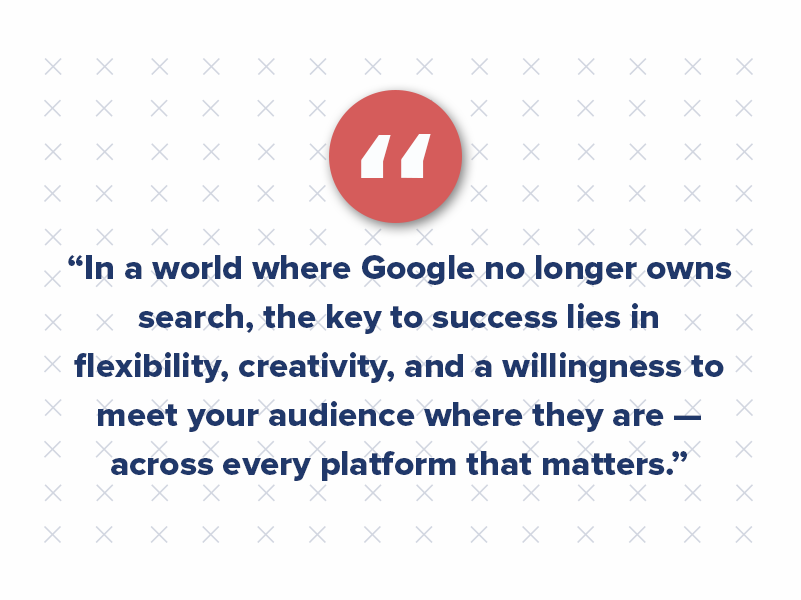
Back to the Basics: The Era of New SEO
The search and content landscape for multifamily marketing is undergoing its most profound shift in decades. Generative AI, alternative search platforms, and evolving user behaviors are rewriting the rules that many of us grew comfortable with. As an executive, it’s easy to feel a bit of uncertainty (or even skepticism) amid all the rapid change. But within this upheaval lies opportunity.
The key is to embrace the change strategically, without losing sight of timeless marketing truths. If there’s one theme that emerges from examining these trends, it’s a sort of “back to basics” by way of the future.
Yes, the tools and platforms are changing — from Google’s SGE, to TikTok search, to ChatGPT referrals — but what those algorithms and users ultimately seek remains consistent: relevance, value, and trust. In a world where AI can generate content by the ton, originality and authenticity become your trump cards.
For multifamily marketers, the mandate is clear: diversify and double down. Diversify your SEO approach beyond Google — optimize for that “search-everywhere” reality where renters might find you on Instagram, YouTube, or an AI assistant as much as on a SERP. But double down on what makes your brand stand out — your unique expertise, your data, your community of residents (who can advocate for you), and your human touch.
Practically, this means your marketing team’s playbook for the next 12 months might include actions like these:
- Conduct a Content Audit for Originality: Review your blog, website, and social content. How much of it is saying the exact same thing as your competitors (or what an AI could scrape together)? Identify places to inject original research in SEO content — perhaps commissioning a renter survey, analyzing your internal data for trends (e.g., “move-in rates are highest in Q3” or “pet owners stay 6 months longer on average”), or creating interactive content (like a rent calculator or neighborhood quiz). This original content will not only engage readers but also earn backlinks and citations that improve your Google SEO and even your presence in AI summaries.
- Build a UGC and Community Strategy: Make it easy and rewarding for your residents to leave reviews, share on social, and participate in testimonials. This might involve reputation management software or simply more active community management on your part. Remember, every star rating and review snippet can bolster your brand authority in SEO by signaling trust to algorithms (and humans!). As we saw, authenticity is king, and your residents can speak to that better than anyone.
- Train Your Team (and Yourself) on AI: Rather than fearing AI tools, empower your marketing team to use them wisely. AI can assist with keyword research (e.g., using ChatGPT to brainstorm question variants people might ask), help repurpose content (turn a blog post into a tweet thread or a video script), and handle mundane tasks — freeing your humans to focus on strategy and creativity. Establish guidelines for AI-generated content to ensure it meets your quality standards and is transparent. By weaving AI into your workflows, you stay efficient and signal that your organization is forward-thinking.
- Stay Educated on SEO Developments: The pace of change in search marketing is blistering. What Google rolls out this month might change by next quarter. Consider allocating time for your team to follow SEO news or even engage with SEO communities. When Google makes a major change (like an SGE update or an algorithm tweak), have a quick internal review of how it might affect your properties’ web traffic and lead flow. In short, keep your finger on the pulse. The companies that adapt fastest often gain a competitive edge.
- Refocus on Metrics that Matter: Lastly, rethink how you measure marketing impact in this new era. Traditional metrics like organic traffic and click-through rate are still important, but we might need to add new KPIs to the dashboard. For example, if zero-click searches rise, you might track “brand visibility” — such as how often your brand appears in search results or is mentioned by AI, even if a click doesn’t occur. You might track engagement on social platforms as part of SEO success (since those platforms drive search discovery). And of course, bottom-line metrics like lead volume, conversion rate, and occupancy rate remain the ultimate judges of success. Ensure that even as you try new approaches, you tie your efforts back to tangible business outcomes (leases signed, inquiries, tours booked). Upper management will appreciate that you’re innovating and staying accountable to results.
Navigating this new SEO landscape requires a blend of openness and steadfastness. Be open to the new: new platforms, new techniques, new consumer habits. Experiment with that TikTok idea, test a voice-search optimized FAQ, explore a partnership with local influencers, or try a pilot using AI for a content series. But remain steadfast in your commitment to your brand’s core value proposition and authenticity.
Technology will continue to evolve, but the fundamental need for trust and authority in marketing does not change. Generative AI and Google’s evolving search might reshape how SEO is done, but they don’t change why SEO is done — to connect your offering with the people who need it, in the moments they are searching.
The path forward is to adapt boldly while carrying forward the lessons of what truly resonates with renters. Do this, and you won’t just survive the changing SEO game; you’ll lead it, human touch and all, into the future of multifamily marketing.

AI Search Traffic Is Rising, But Does It Really Matter?
There’s been a lot of noise lately about AI-powered search, with tools like ChatGPT and Perplexity promising a new era of discovery and content consumption. But for all the buzz, are these platforms actually delivering meaningful traffic to businesses?
The short answer: Not really — at least, not yet.

The Data Tells a Different Story
Despite an eightfold increase in ChatGPT referral traffic over six months, these visits still represent less than 0.1% of total site traffic for top publishers like The Guardian, Forbes, and The New York Post. In other words, AI-driven search isn’t sending significant clicks — at least not at the scale traditional search engines do.
In January 2025, The New York Post received 760,000 visits from ChatGPT, representing 0.5% of its 143.5 million monthly visits. Meanwhile, The Guardian and Forbes also saw sizable gains, with 730,000 and 560,000 referrals, respectively.
For industries that rely on organic traffic (multifamily included), this raises an important question: Should we shift focus away from SEO in favor of AI-driven discovery?
Not so fast.

AI Search vs. Traditional Search: A Multifamily Perspective
Let’s bring this into our world. When renters search for apartments, they’re not just looking for answers — they’re looking for places to live. They want photos, reviews, pricing, and availability. They want an experience, not just a summary. And that’s where traditional search engines still dominate.
Google sends traffic directly to apartment websites, ILS listings, and community pages. It leads users to interactive maps, virtual tours, and leasing portals where they can take action. AI search, on the other hand, often provides summarized answers without driving users deeper into the funnel.
For property managers, developers, and marketers, that means SEO still reigns supreme. Ranking well in search results, optimizing Google Business Profiles, and leveraging high-intent keywords are still the most effective ways to capture organic traffic and convert prospects into leads.
But what about generative AI? If renters begin searching differently — asking conversational queries instead of traditional keyword searches — won’t that change the way we need to approach SEO?
Yes and no.
AI, Generative Search, and the Human Element
In one of our latest blogs, we explored how AI-powered search is evolving and what that means for content marketing. Google’s Search Generative Experience (SGE) is already shifting how search results appear, offering AI-generated summaries instead of a standard list of links.
This has some marketers worried. If AI-generated snippets provide all the information upfront, will users even need to click through to a website?
Not necessarily.
AI-generated search results still pull their information from web content. That means the businesses that invest in high-quality, well-structured, and authoritative content will still get cited.
However, here’s where the real problem lies: AI isn’t perfect.
At Criterion.B, we’ve tested countless AI-generated pieces, and while tools like ChatGPT and Gemini are helpful for brainstorming, they lack depth, nuance, and accuracy in some instances — all things a human editor must fix before publishing. Relying too heavily on AI content leads to generic, impersonal, and often incorrect information. AI alone isn’t enough — it still needs a human touch.
We also see Answer Engine Optimization as a natural evolution of traditional SEO — not a replacement. While ranking on Google’s first page is still essential, the way users search for information is shifting. More than ever, search engine results pages (SERPs) are dominated by featured snippets, AI-generated summaries, and voice search responses. This means users increasingly get their answers before ever clicking on a website.
For multifamily websites, this shift requires a new approach. It’s not just about ranking — it’s about being the answer. Instead of focusing solely on keyword rankings, Answer Engine Optimization ensures your content is structured to deliver immediate, direct answers to user queries, increasing visibility in featured snippets, AI-powered search results, and voice search.
Multifamily SEO in the Age of AI Search
So, should multifamily marketers care about AI search? Yes — but with caution.
AI-driven search is still evolving, and its role in multifamily marketing remains uncertain. While generative AI referrals may increase over time, they are unlikely to replace the need for a strong multifamily SEO strategy. The key is balance:
- Continue prioritizing traditional SEO — it’s still the primary driver of organic traffic.
- Enhancing structured data so search engines can better understand and feature your content.
- Prioritizing user intent by crafting content that aligns with the way people actually search, whether they’re typing into Google or asking Alexa for apartment recommendations.
- Monitor AI-driven search trends — but don’t overhaul your multifamily marketing plan just yet.
- Optimize for featured snippets and structured data to increase the chances of generative AI tools citing your content.
- Create content that ChatGPT and others want to reference — thought leadership, original research, and unique insights are more likely to be used in AI-generated responses over rehashed, generic content.
This last point is crucial. Brands that invest in proprietary data and original content will always have an advantage — because AI tools can only summarize what already exists. If your content is the original source, AI will use it.
The Future of AI Search and Multifamily Marketing
We’re still in the early days of AI-driven search, and no one knows exactly how it will shape the industry long term. But if there’s one takeaway from all of this, it’s this: SEO isn’t dead. It’s just evolving.
What’s your take? Are you seeing meaningful traffic from AI-driven search, or is it all just noise? Let’s discuss.

Generative AI in Marketing: Is Original Research Still Worth It?
AI-generated content has exploded in the last few years, making SEO efforts faster and more scalable than ever.
But with the rise of generative AI, are we losing true expertise? AI can churn out thousands of words in seconds, but is it just repackaging what’s already out there?
In contrast, original research brings something new to the table — data-driven insights that drive authority, build trust, and differentiate brands.
But scaling original research in SEO is tough. It takes time, effort, and resources.
So, in an era where generative AI is at our fingertips, is original research still worth the investment? Or are we headed toward a future where SEO is simply about who can produce content the fastest?
We asked eight thought leaders for their take on original research vs. AI-generated content, and the consensus is clear — while generative AI in marketing can enhance efficiency, original research remains the key to true authority.

The Challenge of Scaling SEO Through Original Research
Scaling SEO with original research is problematic because it requires time, money, and expertise. Unlike AI-generated content, which can be produced quickly, original research involves surveys, proprietary data collection, and industry reports.
Aaron Franklin, Head of Growth at Ylopo, knows firsthand how powerful original research can be. He ditched generic SEO tools for manual surveys and found that what people actually care about often differs from what search algorithms assume.
“In 2018, I manually surveyed 400 homeowners instead of relying on SEO tools,” Franklin said. “The result? A report revealing 68% cared more about commute times than school districts — a nuance algorithms missed. That study still drives 12% of our organic traffic today.”
Franklin’s experience highlights a key limitation of AI: It can summarize existing data, but it can’t generate new insights. This is why original research holds lasting value — it feeds unique, high-quality content into the SEO ecosystem rather than rehashing the same information AI scrapes from the web.
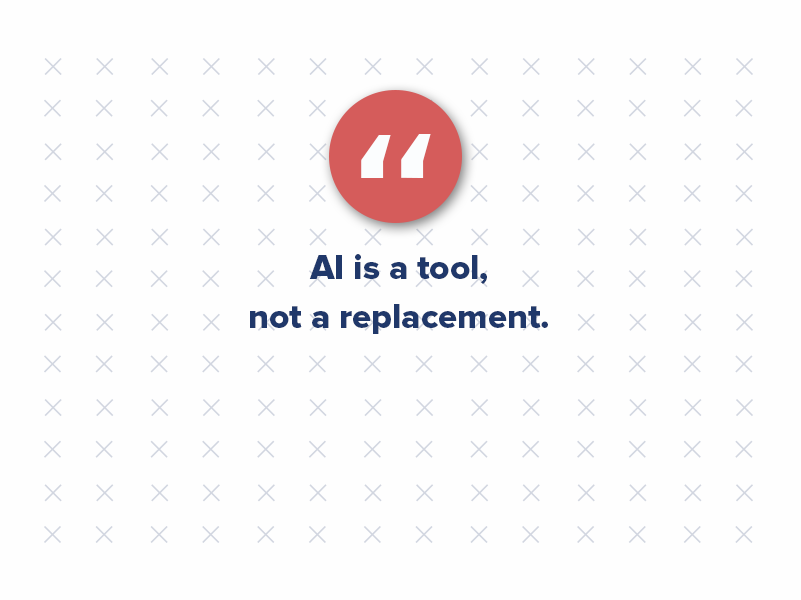
Why Original Research Still Matters in SEO
Many marketers agree: While original research is challenging to scale, it’s more impactful in the long run.
Lana Rafaela Cindric, SEO & Content Manager at SiteGuru, points out that people are tired of seeing the same recycled content online:
“Most content out there is rehashed and plain annoying to users who now turn to Reddit for fresh insights,” Cindric said. “We first look at what our data can tell us about audience challenges, then format it into what works best — blog posts, videos, or whitepapers. This has led to increased organic rankings and social shares.”
This is the real power of original research — it doesn’t just help SEO; it builds brand authority in SEO and thought leadership.
Darwin Liu, CEO of X Agency, emphasizes how original research sets brands apart:
“Scaling SEO with original research is challenging but rewarding. We’ve increased engagement by 50% through data-driven reports, secured high-authority backlinks, and created evergreen content that fuels long-term organic growth. AI can summarize, but it can’t replace real-world insights.”
Simply put, brands willing to invest in original research will own their niche, while those relying solely on AI-generated content risk blending into the noise.
AI + Original Research: Finding the Balance
The best approach isn’t choosing between AI and original research — it’s leveraging both. AI can process large datasets and summarize trends, but it works best when paired with original data that generative AI doesn’t have access to.
For example, Swayam Doshi, Founder of Suspire, ran a study on eco-friendly packaging preferences, and the results were game-changing:
“By publishing our findings, we saw a 41% increase in organic traffic within three months. AI made it easier to analyze the data, but the original research helped us stand out as a thought leader.”
Similarly, Laurence O’Toole, CEO of Authoritas, notes that original research plays a huge role in lead generation and competitive advantage:
“Original research works exceptionally well for high-quality lead generation and increased conversion rates. It also generates links and shares, positively impacting rankings.”
AI alone can’t create this level of engagement. But when AI is used as a supporting tool — to process data, automate tasks, or repurpose insights — it becomes a powerful asset in scaling research-driven content.

Are We Losing Expertise in the Age of AI?
With AI-generated content flooding the internet, some fear that true expertise is being lost. But for those willing to go beyond generic AI-driven content, the opportunity to stand out is greater than ever.
As Yoyao Hsueh, Founder and CEO of Floyi, puts it:
“Original research is the gold standard of content and SEO. AI can summarize existing knowledge, but it can’t generate new knowledge. That’s where real expertise comes in.”
At Criterion.B, AI is an incredibly useful tool for content marketing, but it should never replace human expertise. Brands that commit to producing new insights — whether through surveys, case studies, or proprietary research — will always have an edge.
The future of SEO isn’t about who can generate the most content the fastest. It’s about who can provide the most valuable content.
That’s what sets real thought leaders apart.

Mastering AEO: The Key to Engaging Renters in an Evolving Search Landscape
As search evolves from delivering blue links to providing direct answers, Answer Engine Optimization (AEO) has emerged as a pivotal strategy in digital marketing.
AEO focuses on optimizing content, so it’s primed for platforms like Google’s Search Generative Experience (SGE), voice assistants, and AI-driven tools like ChatGPT. For multifamily marketers, embracing AEO is not just optional — it’s essential to stay ahead in a competitive market.

What Is AEO, and Why Does It Matter?
AEO is the process of optimizing content to ensure it appears as a direct answer to users’ queries. Unlike traditional Search Engine Optimization (SEO), which targets general keyword rankings, AEO focuses on delivering concise, accurate, and structured responses that align with user intent.
AEO boosts organic traffic by securing spots in answer boxes and featured snippets, which dominate search engine visibility. With 58% of consumers turning to voice search for local businesses, optimizing for this format enhances local SEO and drives valuable traffic to your site.
In 2025, users will increasingly rely on AI tools and voice search for quick answers. For example:
- Renters might ask their devices, “What are the best pet-friendly apartments near me?”
- Potential clients might search, “Which amenities are most popular in luxury apartments?”
To capture these moments, multifamily brands need to position their content as the best, most relevant answer.
Our Stance on AEO
At Criterion.B, we view Answer Engine Optimization (AEO) as an evolution of traditional SEO, not a replacement. While organic rankings remain crucial, AEO focuses on delivering immediate, actionable answers that align closely with search intent. This shift is about meeting users where they are, especially on search engine results pages (SERPs), increasingly dominated by featured snippets and AI-powered summaries.
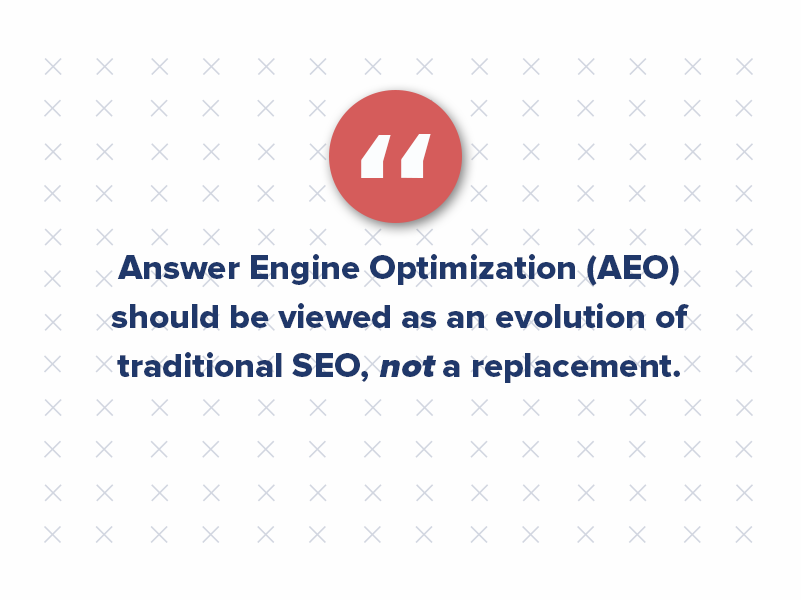
For multifamily websites, embracing AEO means balancing traditional SEO strategies with content designed to address user questions directly. This approach allows for better visibility in both organic search results and answer boxes, driving organic traffic while enhancing the overall user experience.
To thrive in an AEO-driven landscape, we recommend multifamily brands adopt a strategy that emphasizes:
Concise and Clear Content
Content should be structured to optimize for featured snippets, ensuring it answers specific queries clearly and succinctly. For example, FAQs, bullet points, and headers can help search engines identify your content as relevant to user searches.
Data-Driven Insights
Leverage keyword research to understand what your audience is asking and what resonates with them. Search intent is key — know whether your audience is looking for quick answers, detailed guides, or actionable advice. For instance, Ahrefs reports that nearly 8.6% of clicks go to featured snippets, highlighting the value of appearing in these high-visibility spaces.
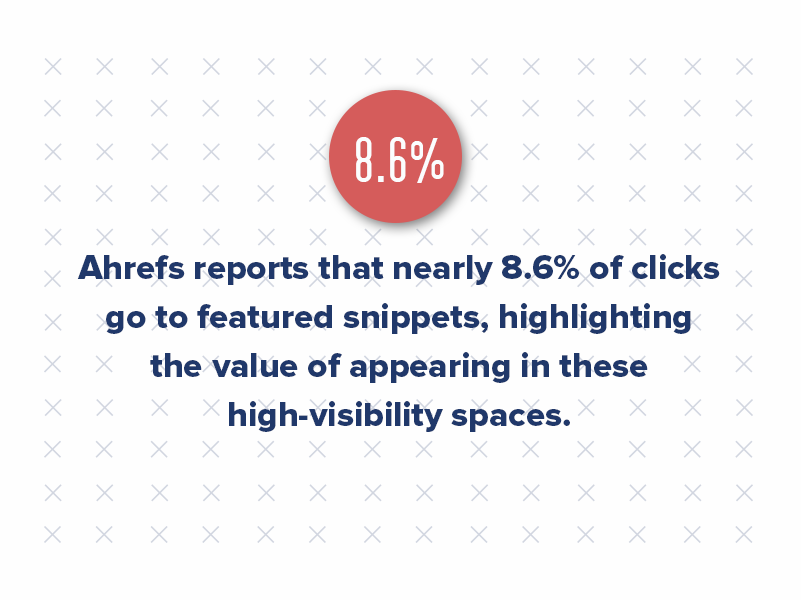
Engaging and Relevant Formats
Content from video snippets to visually appealing infographics should be tailored to engage users. Tools like Semrush have shown that rich content formats can boost click-through rates significantly, especially when paired with structured data for better discoverability.
Integration with Broader SEO Strategies
Answer engine optimization isn’t about abandoning traditional SEO but enhancing it. Multifamily marketers should aim for a balanced approach that aligns AEO efforts with ongoing SEO strategies, such as improving organic search rankings, creating relevant blog posts, and focusing on user experience.
In 2025, the rise of generative AI and voice search will further amplify the importance of optimizing content for answer boxes and search results pages. At Criterion.B, we see AEO as a vital tool in a broader marketing toolkit — one that complements branding, local SEO, and engagement tactics to deliver tangible results.
How AEO Is Changing Multifamily Websites
Featured snippets and answer boxes capture a notable share of clicks, with studies showing they account for an average of 8.6% of top-position clicks. This underscores the importance of optimizing content to answer user queries directly, especially as featured snippets are commonly used in voice search results.
AEO is transforming how multifamily websites are designed and optimized. Key changes include:
Enhanced FAQ Sections
Websites now need robust FAQ pages that anticipate user queries. For example, questions like “What amenities are included?” or “How far is this community from downtown?” should be addressed with clear, concise answers optimized for text and voice search.
Schema Markup Integration
Structured data is critical for answer engine optimization. Multifamily websites must implement schema markup to help search engines understand content context, such as floorplans, pricing, and availability.
Focus on Local Search
Local SEO has become even more important in the AEO era. Queries like “affordable apartments near [city]” are answered more effectively when Google can identify accurate NAP (Name, Address, Phone) information and localized content.
Voice Search Optimization
With more renters using voice search, websites must adapt to conversational queries. Content must mimic natural language and focus on long-tail keywords to cater to these search patterns.
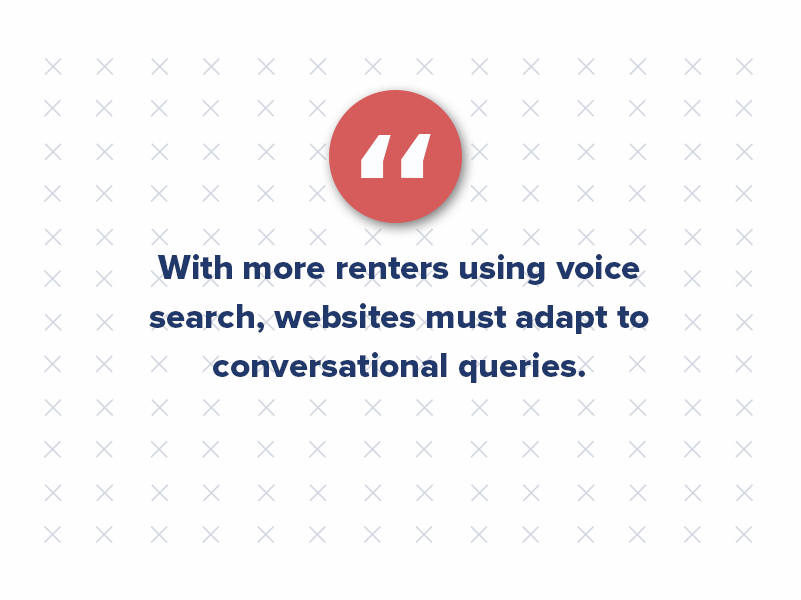
The Status of AEO in 2025
As of 2025, answer engine optimization has become a mainstream practice. Major search engines, voice assistants, and AI platforms rely on algorithms to prioritize direct, relevant answers. Multifamily marketers are seeing:
- Higher Engagement Rates: Answer-focused content captures attention more effectively.
- Improved Conversion Rates: Renters who find precise information are more likely to act quickly.
- Increased Dependence on Structured Data: Without structured data, even high-quality content risks being overlooked by AI-driven systems.
However, challenges remain. Many brands struggle to balance providing direct answers with driving traffic to their websites. The shift from clicks to zero-click results requires a new approach to measuring success.
How AEO Will Affect Multifamily Marketing
Content Prioritization
Content strategies will prioritize answering high-intent questions and making blogs, FAQs, and community pages essential for attracting and engaging renters.
Increased Importance of Video
Video snippets are becoming a preferred format for AI systems. Multifamily marketers must invest in high-quality videos showcasing property tours, amenities, and resident testimonials.
Shift in Metrics
Traditional SEO metrics like clickthrough rates (CTR) may decline as AI provides answers directly. Marketers must focus on engagement metrics, such as time on page and lead form completions, to gauge effectiveness.
Greater Role of AI Tools
Generative AI tools like ChatGPT are already being used to craft AEO-friendly content. Multifamily marketers can leverage these platforms to produce natural, engaging answers tailored to renter queries.

How Are People Adapting?
As SGE and answer engine optimization take center stage in searches, businesses are rethinking their strategies to stay competitive in an AI-driven world. From retraining marketing teams to redesigning websites for better usability, the focus has moved to creating content that serves both human users and search engines. Here are a few ways our agency and our clients are adapting:
Investing in AEO-Focused Training
Multifamily marketing teams are being trained to think beyond traditional SEO. Understanding how search engines interpret queries and structure results is now a critical skill.
Refreshing Website Content
Websites are being reimagined to prioritize user intent. Navigation is simplified, and content is structured for human readability and machine parsing.
Collaborating With AI Experts
Brands are partnering with AI specialists to optimize their content for tools like SGE and voice assistants. This collaboration helps maintain visibility in a rapidly evolving landscape.
Building Trust Through Transparency
As AI-generated content increases, transparency matters more than ever. Including disclaimers about AI involvement in content creation fosters trust and aligns with consumer expectations.
We’re in Our AEO Era
Answer engine optimization represents the future of search, offering multifamily marketers a unique opportunity to connect with renters more meaningfully. Focusing on user intent, leveraging structured data, and adapting to new search behaviors will become key so multifamily brands can remain competitive in a crowded digital landscape.

Why Multifamily Marketers Must Optimize Beyond Google
The search landscape has shifted dramatically, and Google no longer holds the monopoly it once did.
While it still leads with 18.8% of the global search marketshare, platforms like Instagram, Baidu, Snapchat, and Amazon are gaining traction, each carving out its own space in how users search for and interact with content.
Instagram has secured its position as the second-largest search platform, reflecting a clear trend: search behavior is diversifying.

For multifamily marketers, this shift means that SEO strategies can’t rely solely on Google anymore. With users increasingly turning to alternative platforms to discover properties, neighborhoods, and community experiences, the goal must be to optimize for multiple search engines and social platforms to stay relevant and visible.
The future of SEO lies in embracing this fragmented search ecosystem and crafting strategies that work across platforms.
Why Google Isn’t the Only Search Game in Town
While Google continues to be a leader in search, its dominance is gradually shrinking as users explore platforms tailored to specific needs. For multifamily properties, this shift signals a need to diversify SEO strategies and rethink digital multifamily marketing efforts. Platforms like Instagram, Snapchat, and Amazon are becoming integral to how users search for information, make decisions, and engage with brands.

Instagram, for example, has evolved into a powerful search engine in its own right. Users frequently search for local businesses, community visuals, and reviews on the platform, making it an invaluable tool for multifamily marketers looking to enhance user experience. Between Instagram’s visual appeal and ability to optimize posts with long-tail keywords, marketers can connect with potential renters where they’re already searching.
Snapchat offers another avenue, especially for targeting younger demographics. Its visual-first approach aligns well with creating high-quality content that resonates with users deciding where to live. Incorporating keyword research into captions and leveraging geotargeted filters can boost visibility for multifamily properties in local searches.
Although primarily a marketplace, Amazon plays a surprising role in organic searches related to housing essentials and living spaces. Multifamily marketers can use this platform to create content that links back to their properties, like blog posts about decorating small apartments or tips for maximizing storage. This strategy increases organic traffic and strengthens the marketing plan by addressing users’ specific search queries.
Relying solely on Google rank means missing opportunities to connect with your target audience across platforms where they spend significant time. Diversifying your content creation efforts to optimize for multiple platforms ensures that your multifamily property ranks higher in organic searches and builds trust with potential renters.
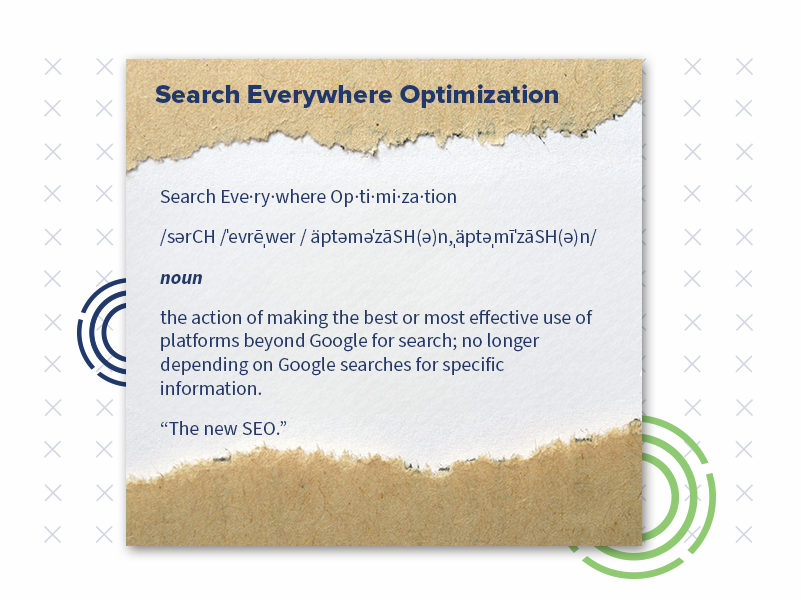
Strategies to Optimize Beyond Google
If you only optimize your content for Google, you’ll likely miss out on many prospects. This is why we recommend the new SEO approach.
What’s the “new” SEO? It’s “search everywhere optimization.” This means we must take more ownership to optimize beyond Google.
SEO is evolving and you need to adapt to help maintain overall traffic levels through new ways of thinking and modern practices.
Even Google’s Search Liaison, Danny Sullivan, said, “One of the ways to be successful with Google Search is to think beyond it.”
Here are some key strategies to help you succeed:
1. Optimize for Visual Search on Instagram
Instagram is a powerhouse for visual storytelling. The demand for quick, visually engaging content is reshaping how people search. Video content is shared twice as much as other formats, and 58% of Instagram users report feeling more connected to a brand after watching their Instagram stories. Social media platforms now serve as discovery tools, helping users find local businesses, community events, or even apartment listings.

Create content that highlights property amenities, neighborhood culture, and resident experiences. Use location-based hashtags, geotags, and Instagram Stories to enhance discoverability. High-quality, engaging visuals are more likely to appear in search results and resonate with users exploring apartment living.
2. Leverage Local SEO on Multiple Platforms
While Google Business Profile is crucial, expanding local SEO efforts to include platforms like Bing and Yelp can amplify your visibility. Ensure your property listings include accurate and consistent NAP (Name, Address, Phone) details across all platforms.
3. Embrace Short-Form Videos for Snapchat
Snapchat’s focus on ephemeral content makes it a valuable tool for showcasing quick property tours, community events, or local attractions. Short-form video content optimized for Snapchat can help you connect with younger audiences searching for lifestyle-oriented apartment options.
4. Enhance E-Commerce Style Listings on Amazon
Amazon’s search functionality isn’t just for products. It’s increasingly used to explore service offerings and local listings. Multifamily properties can capitalize by creating product-style listings that detail apartment features, benefits, and even move-in packages.
5. Incorporate Schema Markup Across Platforms
Structured data remains a cornerstone of multifamily SEO, but its application must extend beyond Google. Use schema markup to enhance your property listings on Instagram, Amazon, and other platforms to ensure search engines and users can easily interpret your content.
6. Track Cross-Platform Search Behavior
Use analytics tools beyond Google Analytics to track engagement and search trends across platforms. Understanding how your audience interacts with each platform allows you to fine-tune your strategies and allocate resources effectively.

7. Spark Interest With TikTok SEO
TikTok is also a major player in reshaping search behavior. Users turn to TikTok for quick, authentic reviews, how-to guides, and viral trends that often create or reignite search demand on platforms like Google or Amazon. For example, products that gain traction on TikTok, like turmeric skincare or Lululemon’s belt bag, see surges in related search terms across other channels. Multifamily marketers can apply the same principle by creating TikTok videos showcasing property amenities or neighborhood highlights, sparking interest that leads to deeper searches elsewhere.
TikTok SEO involves more than just hashtags. Saying keywords in the audio, using text overlays, and adding keywords in captions and transcriptions all contribute to improved visibility. Embedding TikTok videos on your website can also increase engagement and complement traditional SEO strategies.
8. Attract High-Intent Audiences on Pinterest
With over 450 million active users monthly, Pinterest has become a vital visual search engine that multifamily marketers can leverage to increase brand awareness, drive organic traffic, and engage potential renters. Pinterest users are intentional searchers; this means they often use the platform to gather inspiration or make purchasing decisions, making it an ideal place to attract high-intent audiences.
Pinterest operates on a search-based algorithm, similar to Google. Research relevant keywords using tools like Pinterest Trends or keyword research tools. Focus on terms that resonate with potential renters, such as “luxury apartments,” “pet-friendly communities,” or “downtown living inspiration.” Incorporate target keywords naturally into pin titles and descriptions to improve search discoverability. Create video pins showcasing property tours, local attractions, or resident testimonials to capture attention and engage users.
The New Rules of Multifamily SEO
The rise of alternative search platforms doesn’t mean Google is obsolete, but it does mean multifamily marketers need a more nuanced strategy. Prioritize platforms based on your target audience’s preferences and behaviors.
For example, if your demographic is Gen Z, focusing on Instagram and Snapchat might yield better results than traditional Google SEO. Conversely, Amazon’s utility-driven search features could be more effective if you’re targeting families or professionals.
Diversifying your SEO efforts ensures that your property remains discoverable across various search contexts, whether it’s a renter looking for reviews on Instagram or exploring nearby amenities on Snapchat.
Looking Ahead: A Multi-Platform Future
As search behavior continues to evolve, staying ahead requires a mindset shift. Think beyond Google to create a comprehensive presence across platforms. By optimizing for Instagram’s visual searches, Amazon’s utility-driven queries, and Snapchat’s ephemeral content, you’ll position your property to attract renters no matter where they search.
In a world where Google no longer owns search, the key to success lies in flexibility, creativity, and a willingness to meet your audience where they are — across every platform that matters.

The Experiment That Could Redefine Search
Google’s Search Generative Experience (SGE) is an ambitious experiment that aims to revolutionize how we interact with search engines. However, like any groundbreaking innovation, it’s far from a finished product.
Just as self-driving cars require years of refinement, testing, and real-world adaptation, SGE needs time to mature, improve its technology, and assess its impact on users.
Yet, there’s a growing assumption that SGE — and generative AI platforms like ChatGPT or Bard — will completely disrupt search as we know it, replacing traditional methods and consolidating how we find information.
But this binary thinking oversimplifies the evolution of technology. Just as Facebook, Instagram, Snapchat, TikTok, Pinterest, LinkedIn, and X each carve out unique roles in the social media ecosystem, multiple platforms and models can coexist in the search landscape.
Every platform serves a specific purpose, and user behavior adapts based on the context. While SGE Google and AI-driven platforms bring exciting possibilities, they’re not one-size-fits-all solutions. Traditional search still holds value, offering depth and precision in ways AI hasn’t mastered yet.

What is SGE?
Before diving into the misconceptions, let’s first clarify what SGE is all about.
SGE represents Google’s effort to enhance traditional search using AI. It aims to provide users with deeper, more intuitive search results for every query. The goal is to transform how people search, simplify complex inquiries, and deliver faster, more actionable insights.
According to Google, SGE enables users to:
- Ask more nuanced and descriptive questions that go beyond traditional keyword searches.
- Quickly grasp the essence of a topic with curated links to explore further details.
- Kickstart tasks like drafting content or generating images directly within the search interface.
- Seamlessly continue their search journey with conversational follow-ups and suggested next steps.
At its core, SGE isn’t just about answering questions — it’s about reimagining how we interact with information, making the process more dynamic, contextual, and efficient.
Why does Google SGE matter?
SGE represents the next evolution of search engines. Rather than displaying a list of blue links, SGE provides AI-generated responses to user queries, often summarizing key information from top-ranking content. This means that search engines like Google are moving toward offering users direct, concise answers without requiring them to click through multiple sites.
This shift changes the game for multifamily marketers. If your property’s website, blog, or content marketing strategy isn’t optimized to appear in SGE responses, you risk losing visibility and, ultimately, potential leads. Traditional SEO principles still apply, but they must be expanded to align with how AI curates and prioritizes content.
What’s the impact on multifamily marketing?
1. Shifting visibility from clicks to summaries
Google SGE reduces reliance on traditional organic clicks by summarizing content directly within the search engine results page (SERP). If your content isn’t surfaced in AI summaries, this could mean fewer direct website visits for multifamily properties.
However, the upside is that well-optimized content has the potential to be featured in these summaries, increasing your visibility to renters at a critical stage in their search journey. Being included in an SGE response could position your property as a trusted, go-to source.
2. Increased importance of informational content
Renters often use search engines to explore neighborhoods, compare amenities, or find advice on leasing. SGE prioritizes content that answers these queries comprehensively and accurately. Thus, producing high-quality, value-driven informational content is more critical than ever.
Blogs, FAQs, and resources tailored to renter pain points — such as “best neighborhoods for families” or “tips for leasing your first apartment” — can position your property as an authoritative source that SGE highlights.
3. AI-powered local search optimization
SGE leverages AI to improve local search accuracy. For multifamily properties, this means that appearing in SGE summaries for queries like “best apartments near downtown Austin” or “pet-friendly apartments in Miami” requires a renewed focus on local SEO tactics. Accurate Google Business Profiles, consistent NAP (Name, Address, Phone Number) data, and localized content are crucial in being featured.
AI Disclaimers and Compliance
As AI-generated content becomes more prevalent, ensuring transparency and compliance has become a priority for businesses leveraging these tools. Integrating SGE into search engines like Google amplifies this need, as users demand clarity and authenticity in the content they interact with.
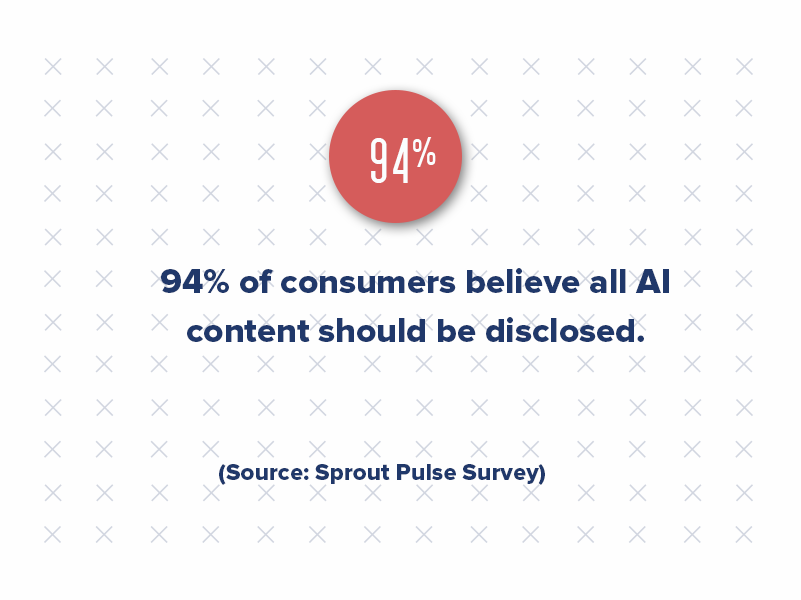
Why do you need AI disclaimers?
A Q2 2024 Sprout Pulse Survey revealed that 94% of consumers believe all AI content should be disclosed, highlighting a growing concern about transparency. Furthermore, 46% of consumers are less likely to buy from a brand that posts AI-generated content without acknowledgment. This sentiment underscores the importance of building trust with your audience by clearly stating when content is created or assisted by AI.
Many publications, including Google itself, have begun adding disclaimers to articles produced entirely or in part by AI. These disclaimers inform readers and reinforce a brand’s commitment to transparency and ethical practices.
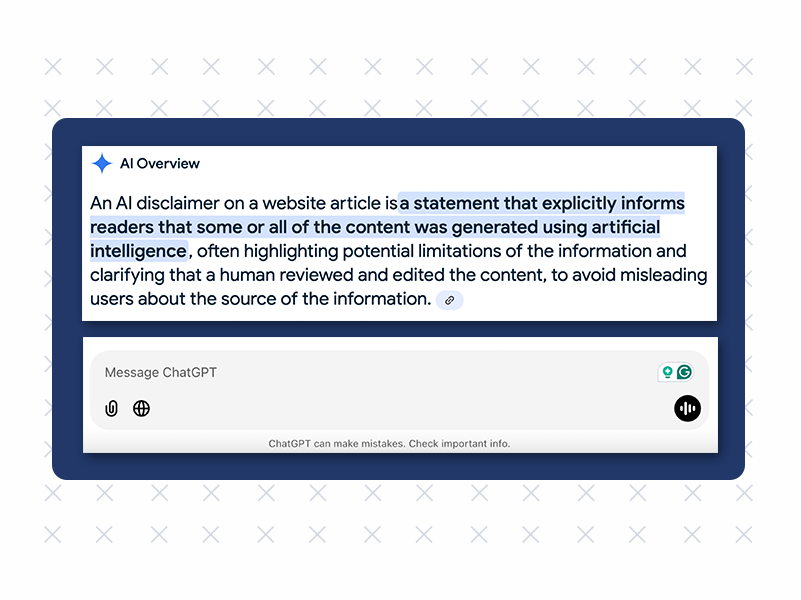
How can multifamily marketers comply?
Incorporating AI disclaimers into your content strategy ensures compliance with emerging best practices while fostering trust among renters:
- Transparency in Content: Include disclaimers on blog posts, emails, or FAQs indicating when AI tools were used in content creation.
- Blend Human Creativity with AI: Balance AI-generated outputs with human insights to maintain an authentic voice that resonates with your audience.
- Train Your Team: Equip your marketing team with guidelines on using AI ethically and disclosing its involvement appropriately.
Adapting Your Strategy for SGE Success
As clickthrough rates decline, ads become less common, and long-tail queries gain prominence, multifamily marketers must adapt to thrive. Here are actionable ways to ensure your strategy aligns with this new era:
1. Optimize for conversational queries
SGE responds to conversational, natural-language questions such as “What are the best luxury apartments in Chicago?” Your content needs to mirror this format. Create blog posts, FAQs, and landing pages that address these questions directly. Use tools like ChatGPT or Google’s “People Also Ask” data to uncover common renter questions and answer them comprehensively in your content.
2. Create long-form, comprehensive content
SGE favors detailed, authoritative content. If your site lacks in-depth resources about your property, community, or the renting process, now is the time to build them. Write detailed blog posts, such as “10 Things to Know Before Renting in Downtown Denver,” incorporating local insights, amenities, and tips to position your property as a trusted expert.
3. Emphasize structured data
Structured data helps search engines understand your content, improving its chances of being included in SGE summaries. Multifamily properties can use schema markup for local business details, reviews, pricing, and amenities. Implement schema for apartments to showcase your property’s unique selling points, such as floorplans, neighborhood details, and available units.
4. Prioritize high-quality local SEO
Local search is crucial for multifamily marketing, and SGE heightens the importance of accurate, localized information. Ensure your Google Business Profile is updated and reflects your property’s offerings. Include location-specific keywords in your meta descriptions, page titles, and content to ensure visibility in location-based queries.
5. Leverage multimedia content
SGE often integrates videos and images into its responses. Multifamily properties that create visually engaging content like property tours, community highlights, and testimonials are more likely to stand out. Create short, engaging videos optimized for YouTube and embed them on your site to increase the likelihood of appearing in search engine results pages.
6. Prioritize E-E-A-T
Experience, Expertise, Authority, and Trust (E-E-A-T) have always been crucial in SEO, but they are even more important in a generative AI world. SGE prioritizes content that exudes credibility and reliability. To excel:
- Showcase experience through user testimonials, case studies, and real-life success stories.
- Highlight expertise with well-researched blog posts and insights.
- Build authority by earning backlinks from reputable sources and optimizing local SEO.
- Reinforce trust through transparent AI disclaimers and high-quality, factual content.
7. Optimize for long-tail keywords
SGE’s focus on detailed, conversational queries makes long-tail keywords more important than ever. By diving deeper into niche topics, you can increase the likelihood of your content being included in SGE responses.
Instead of targeting general terms like “luxury apartments,” optimize for queries such as “luxury apartments near public transit in Denver” or “pet-friendly studio apartments in Miami’s Wynwood neighborhood.”
8. Anticipate lower clickthrough rates
With SGE providing detailed summaries directly on the SERP, users may click through less often. However, this doesn’t diminish the importance of your content — it simply shifts its role. High-quality, scannable content will likely be featured in SGE summaries, ensuring your brand remains visible even if clicks decline.
Pro Tip: To measure your content’s success beyond traditional clickthrough rates, focus on engagement metrics like time on page, bounce rate, and conversion rate.
9. Prepare for fewer ads
As Google integrates SGE, the volume of ads may decrease, making organic visibility even more competitive. To maintain a presence:
- Double down on SEO strategies that align with AI, such as content that answers user queries comprehensively.
- Invest in high-value ad placements that offer tangible ROI rather than spreading your budget across low-performing campaigns.
Adapting to What’s Next
The future isn’t about one technology replacing another — it’s about how these platforms evolve, specialize, and find their place in a constantly shifting digital ecosystem.
Time will tell how SGE reshapes search, how users adapt, and how businesses respond. But what’s clear is this: navigating this new terrain requires a thoughtful strategy, an open mind, and a willingness to adapt to what’s next.

Automation Meets Creativity: AI’s Growing Role in Promotional Products
Artificial Intelligence (AI) is no longer just a buzzword — it’s reshaping entire industries, and the promotional products sector is undergoing one of the most fascinating transformations.
What happens when an industry traditionally driven by human creativity, personalization, and relationships begins to merge with machine learning and automation? The implications are profound.
AI rapidly changes how businesses approach product design, customization, and distribution, offering unprecedented efficiency while challenging the balance between automation and the human touch.
As AI continues to evolve, what will its long-term effects be on creativity, multifamily branding, and consumer engagement in promotional products?
The answers could redefine the industry as we know it.

A New Era of Customization
One of the most significant contributions AI has made to the promotional products industry is personalization. Today’s consumers and businesses crave personalized products that feel unique and relevant. AI’s ability to process vast amounts of data and generate insights into customer preferences makes this possible.
A study by Salesforce found that 72% of consumers expect companies to personalize experiences based on their needs and preferences.
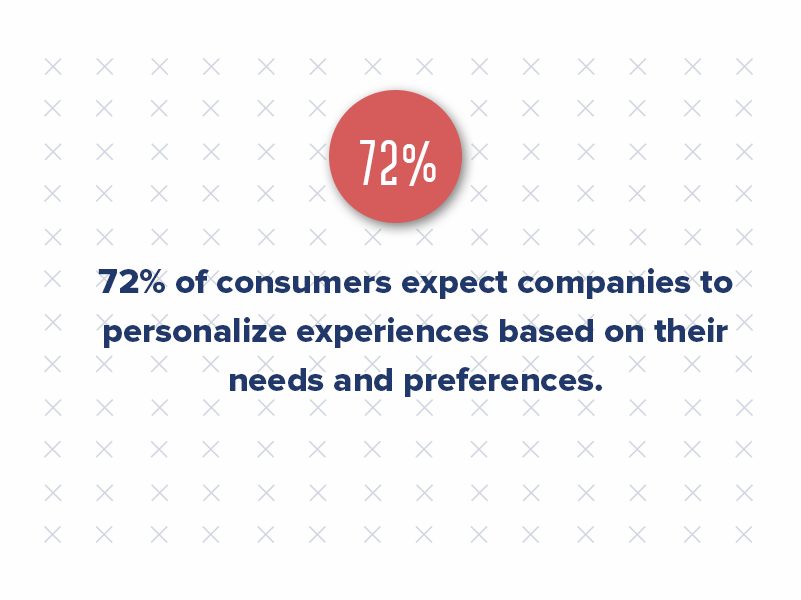
AI enhances how companies create and distribute branded merchandise, from streamlining design tools to automating order fulfillment. However, it’s important to approach this transformation with caution. While AI-driven tools can optimize workflows and reduce errors, relying on predictive analytics in this space might not yield the same success. Predictive advertising, for instance, has faced criticism for not consistently driving better results — an approach that might also apply to predictive analytics in promo products.
While AI excels at tasks like improving efficiency and speeding up the customization process, there’s no guarantee it will deliver the nuanced, human-centered outcomes often required in the promotional products industry.
Just as in advertising, AI-driven insights can sometimes miss the mark on understanding the emotional connection branded items create between a business and its customers. What works in terms of efficiency doesn’t always translate to a more meaningful or successful customer experience. As the industry moves forward, businesses must weigh the benefits of AI-enhanced efficiency against the need for genuine human creativity and connection.
Enhancing Efficiency in Supply Chain and Inventory Management
AI’s ability to streamline operations has also improved supply chain and inventory management efficiency. Predicting demand is essential for businesses in the promotional products industry to avoid surplus or shortages. AI-driven tools can analyze historical sales data, market trends, and external factors such as seasonality to forecast product demand.
According to a report by McKinsey, AI supply chain solutions can reduce forecasting errors by up to 50%, leading to better inventory management and cost reductions. This means promotional product companies can ensure they have the right amount of inventory on hand, avoiding the costs of overproduction or stock shortages. Additionally, AI-powered platforms can help promotional product suppliers automate reordering processes, ensuring businesses never run out of popular items.
That being said, relying on AI for accurate demand forecasting remains unpredictable. While these tools can analyze past sales and market trends to forecast demand, it’s essential to acknowledge the inherent risks. AI, much like predictive advertising, can struggle with accurately forecasting human behavior or market shifts, leading to potential missteps.
Automating Design and Creativity
AI is undoubtedly transforming how we approach design in the promotional products industry, but the idea of it entirely replacing human creativity is misguided. Gartner predicts that by 2025, over 30% of marketing collateral, including promotional products, will be generated by AI. While AI won’t replace human creativity, it can significantly enhance it by automating repetitive tasks and providing data-driven insights to improve design choices.
Tools like Adobe Sensei and Canva’s AI features are great for automating repetitive tasks and suggesting data-driven design elements, but the human touch remains essential for truly unique and impactful designs.

At Criterion.B, we believe in leveraging AI to augment and improve our creative process, not replace it. According to Forrester, companies that adopt AI marketing strategies see an average 15% increase in productivity. And AI helps us do just that. AI helps streamline production, allowing our designers to focus on what matters — delivering personalized, high-quality work that resonates with your brand.
Revolutionizing Customer Service Chatbots
Customer service in the promotional products industry has also benefited from AI-driven tools. Chatbots, for example, are increasingly being used by promotional product companies to enhance customer support. These AI-driven bots provide instant responses to customer inquiries, recommend products based on preferences, and guide users through the purchase process.
IBM reports that businesses can reduce customer service costs by up to 30% with AI-driven chatbots and other automation technologies. In the promotional products sector, where large orders and custom designs are often involved, AI-powered customer service tools allow businesses to address queries efficiently while providing personalized experiences.
AI-Powered Sustainability Initiatives
As sustainability becomes a growing concern for consumers, AI can also help promotional product companies create more eco-friendly products and processes. AI-driven platforms can analyze material usage and recommend more sustainable alternatives, helping businesses reduce waste and lower their environmental impact.
The Ellen MacArthur Foundation reports that AI could contribute to a circular economy by helping industries design products with less waste and more recyclability. For the promotional products industry, AI can assist in sourcing eco-friendly materials, minimizing waste during production, and optimizing the supply chain for lower carbon emissions.
The Challenges of AI in the Promotional Products Industry
While AI presents many opportunities, it also comes with challenges. Implementing AI-driven systems can be expensive, particularly for smaller businesses. There’s also the challenge of ensuring data privacy, as AI systems require access to vast amounts of customer data to be effective. Regulatory issues, such as compliance with data protection laws like GDPR, must also be considered when implementing AI tools.
Looking Ahead: The Future of AI in Promo
AI’s impact on the promotional products industry is just beginning. As the technology continues to evolve, we can expect even greater personalization, efficiency, and sustainability in creating and distributing promotional items. In the future, AI could enable even more advanced predictive analytics.
AI-driven innovations like augmented reality (AR) and virtual reality (VR) are also expected to play a role in the promotional products space. Companies may soon be able to offer virtual product previews, where customers can visualize how branded merchandise will look and feel before placing an order.
While there are challenges, the benefits of AI are undeniable, offering companies new ways to innovate and stay competitive. The promotional products industry must adapt to meet evolving customer expectations and market demands.


